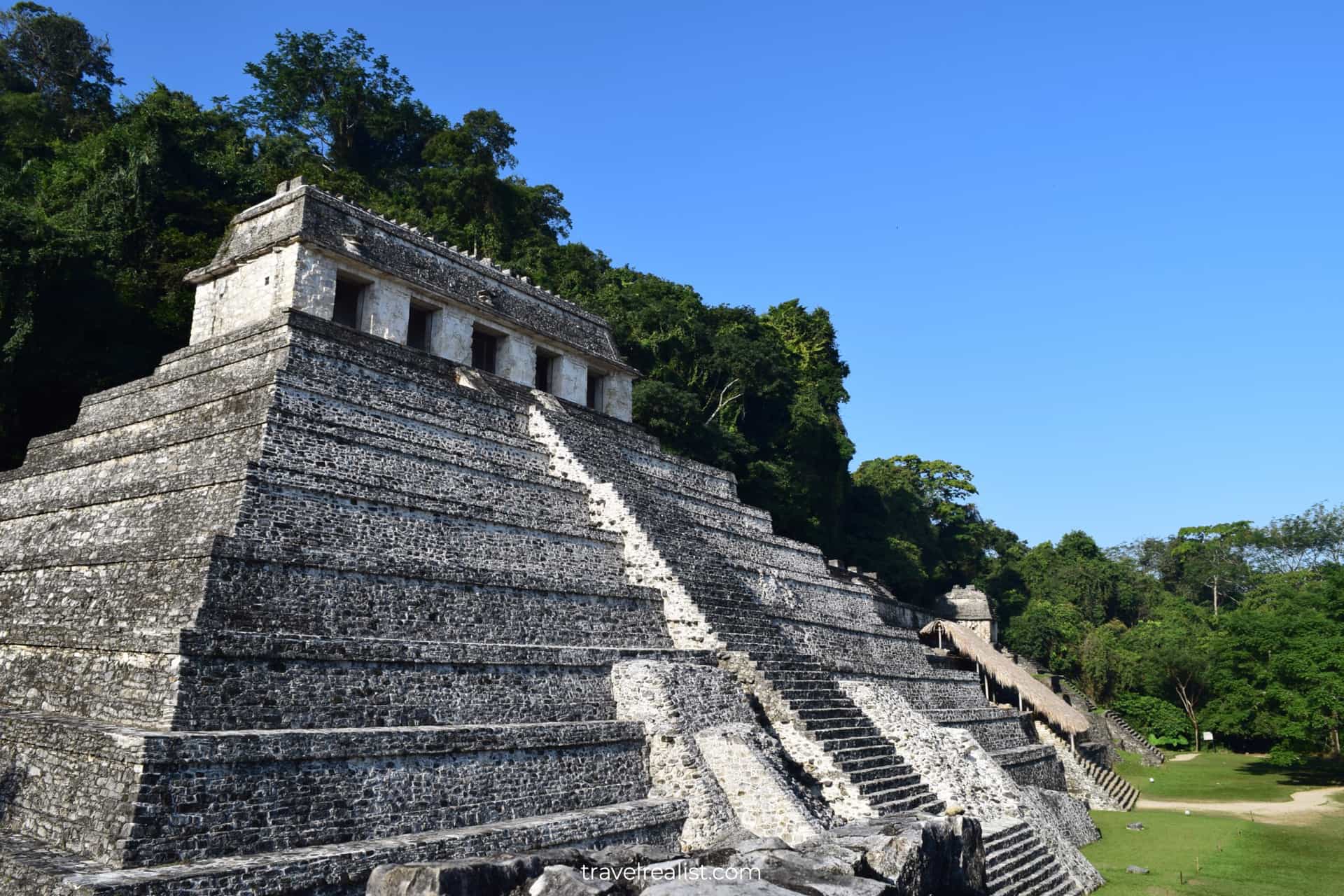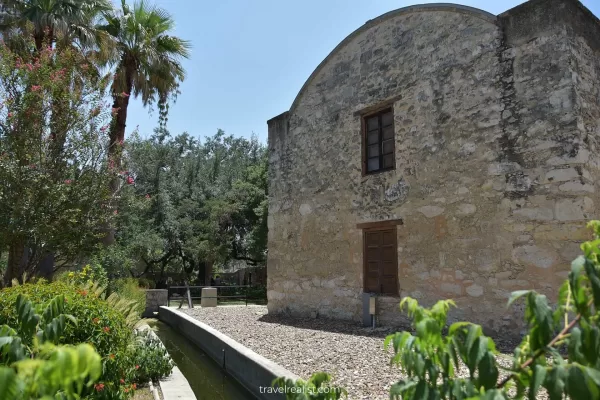Valley of Fire: Day Trip In Nevada’s First Park
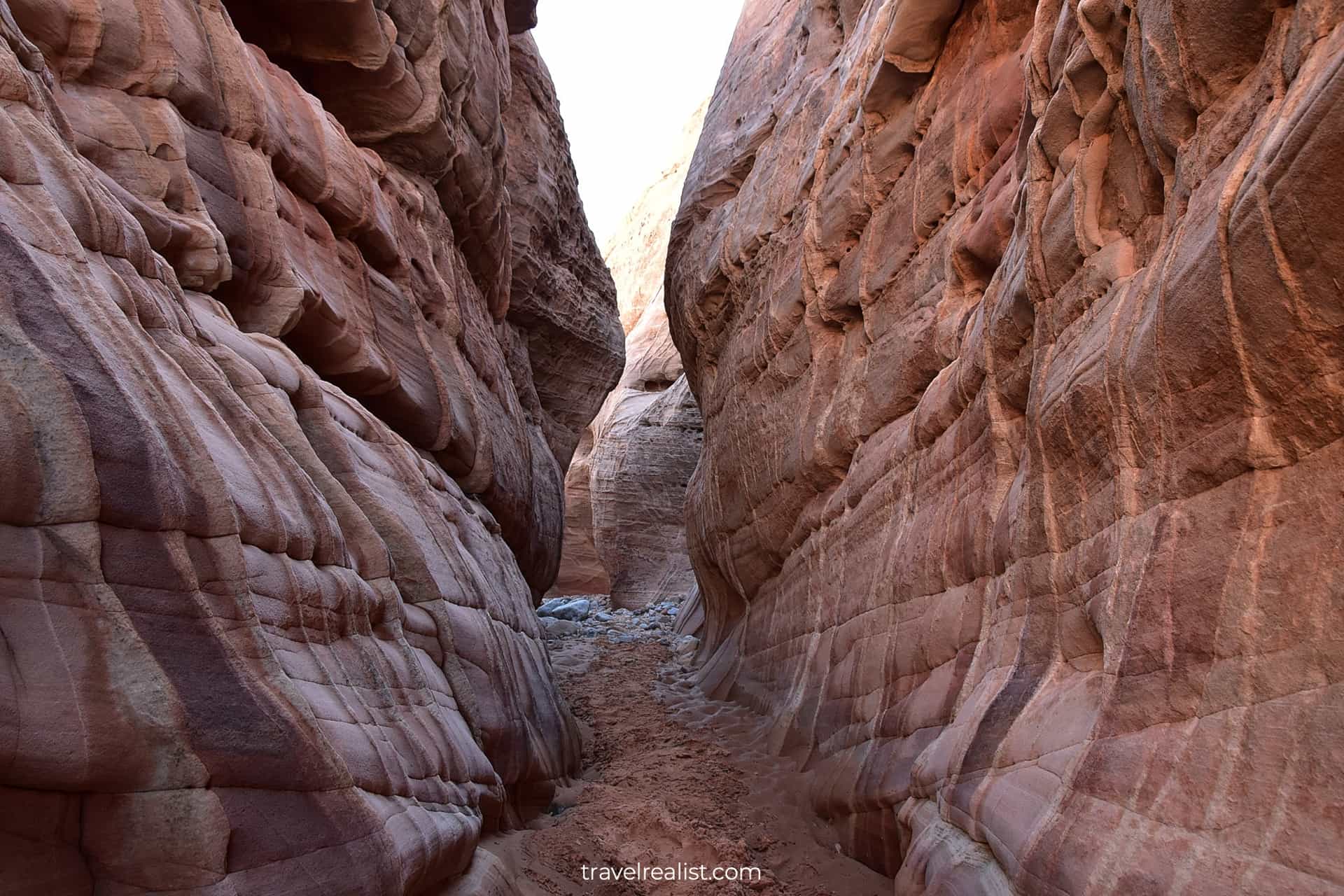
Valley of Fire State Park Guide
Use our realistic Valley of Fire Day Trip Guide to plan your next adventure in this state park.
Valley of Fire is Nevada’s first state park. It protects red Aztec sandstone formations, which gave the park its powerful name.
This post includes affiliate links that will earn us commission if you make a purchase via these links.
Sights & Places of Interest
Valley of Fire became a state park in 1934. It is rich in places of interest. Its sights include slot canyons, colorful rocks, historic buildings, and petroglyphs.
It is easy to spend several hours in this state park just while visiting its major attractions.
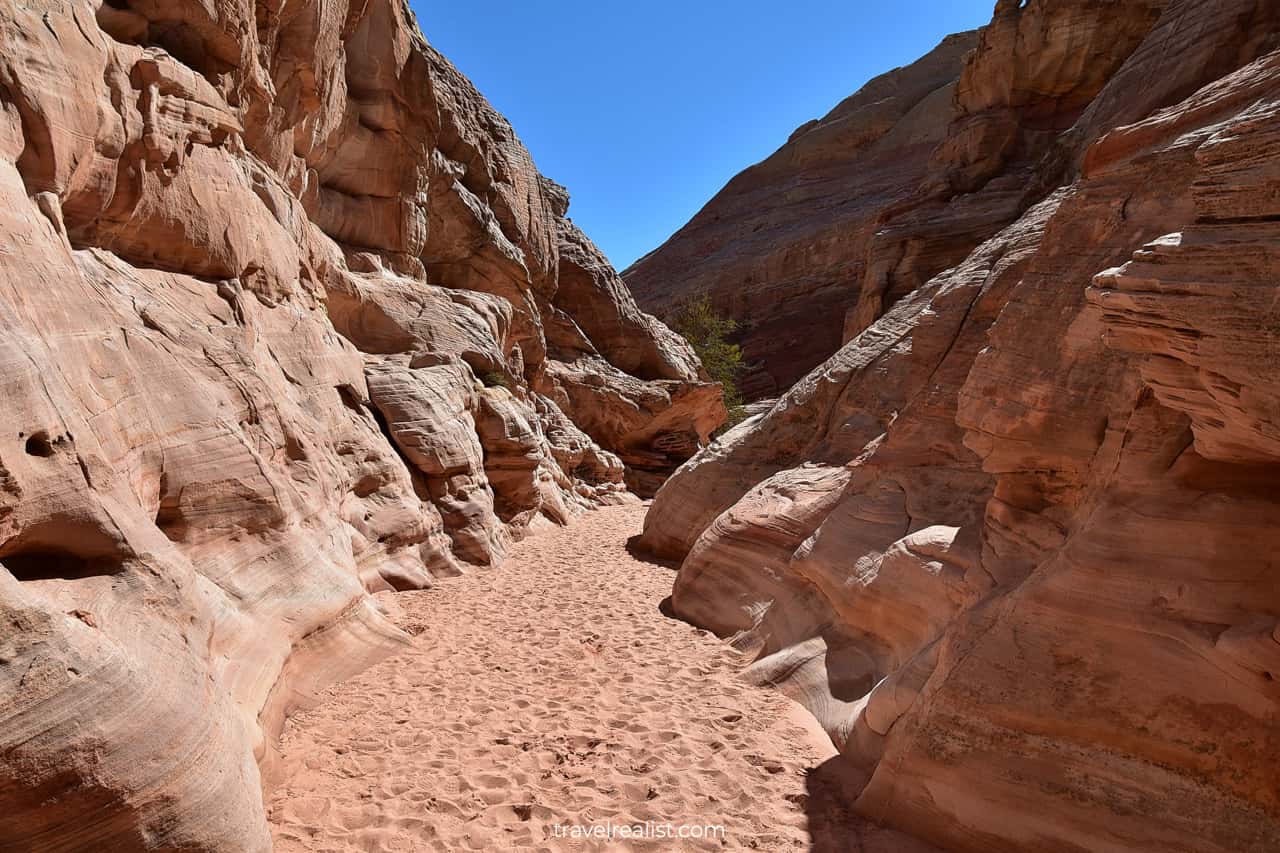
This Valley of Fire Day Trip Guide aims to educate you about the park’s different sights. This way you can make the most from your visit.
If you travel from the north, the East Entrance station will be your first stop in the park. This station is the furthest away from Las Vegas. But it is on the way from Zion and Snow Canyon in Utah.
Lake Mead
It is close to Lake Mead National Recreation Area. Lake Mead is the very first National Recreation Area. You cannot see the Virgin River or Lake Mead from the state park. But you can still enjoy the scenic landscape.
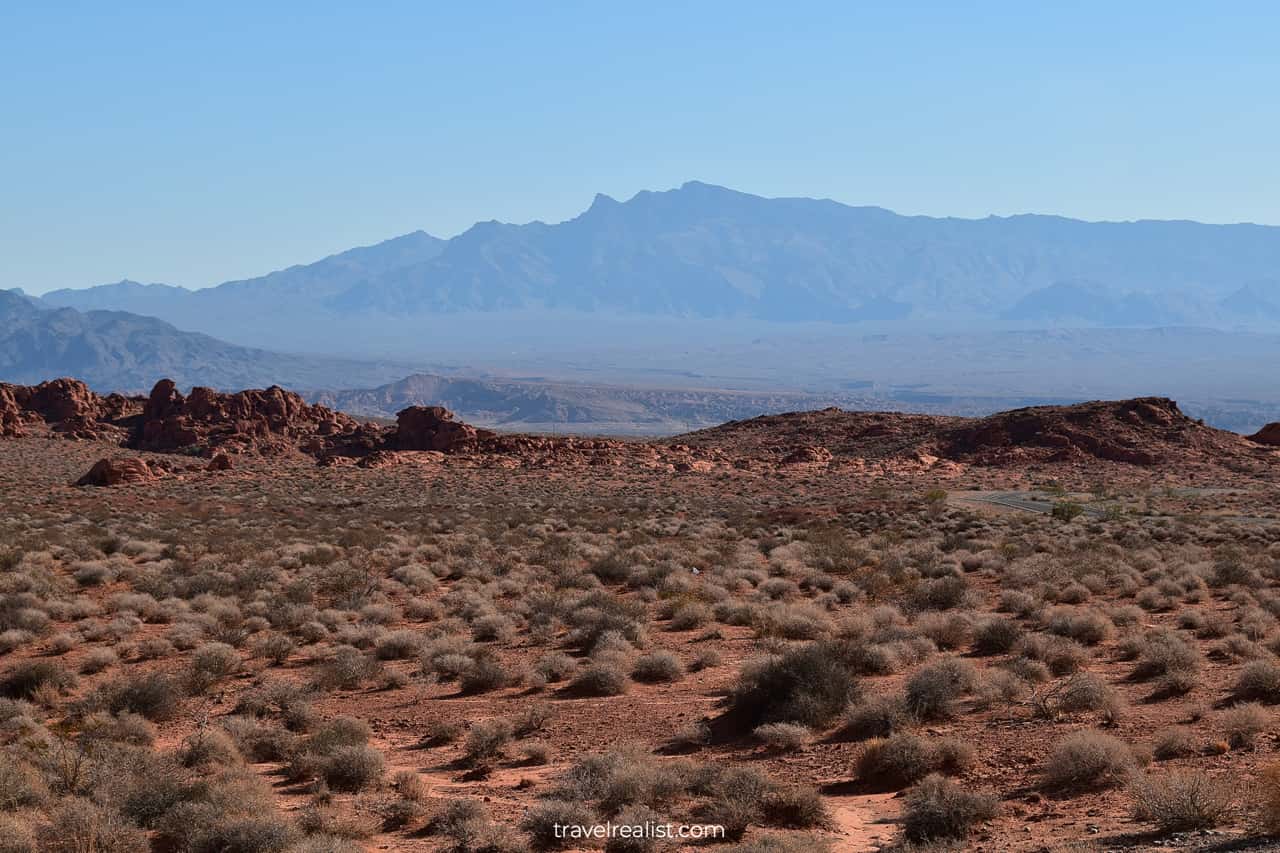
Elephant Rock
The Elephant Rock is just behind the entrance station. Some Valley of Fire visitors might not even reach this sight. It involves a detour from the park’s major attractions.
You can reach the Elephant Rock via a 1.2-mi (2-km) round-trip hike. Or you could see this sight from your vehicle. You just need to drive west on the Valley of Fire Highway. You cannot stop on the highway. But you could get a good look without needing to hike.
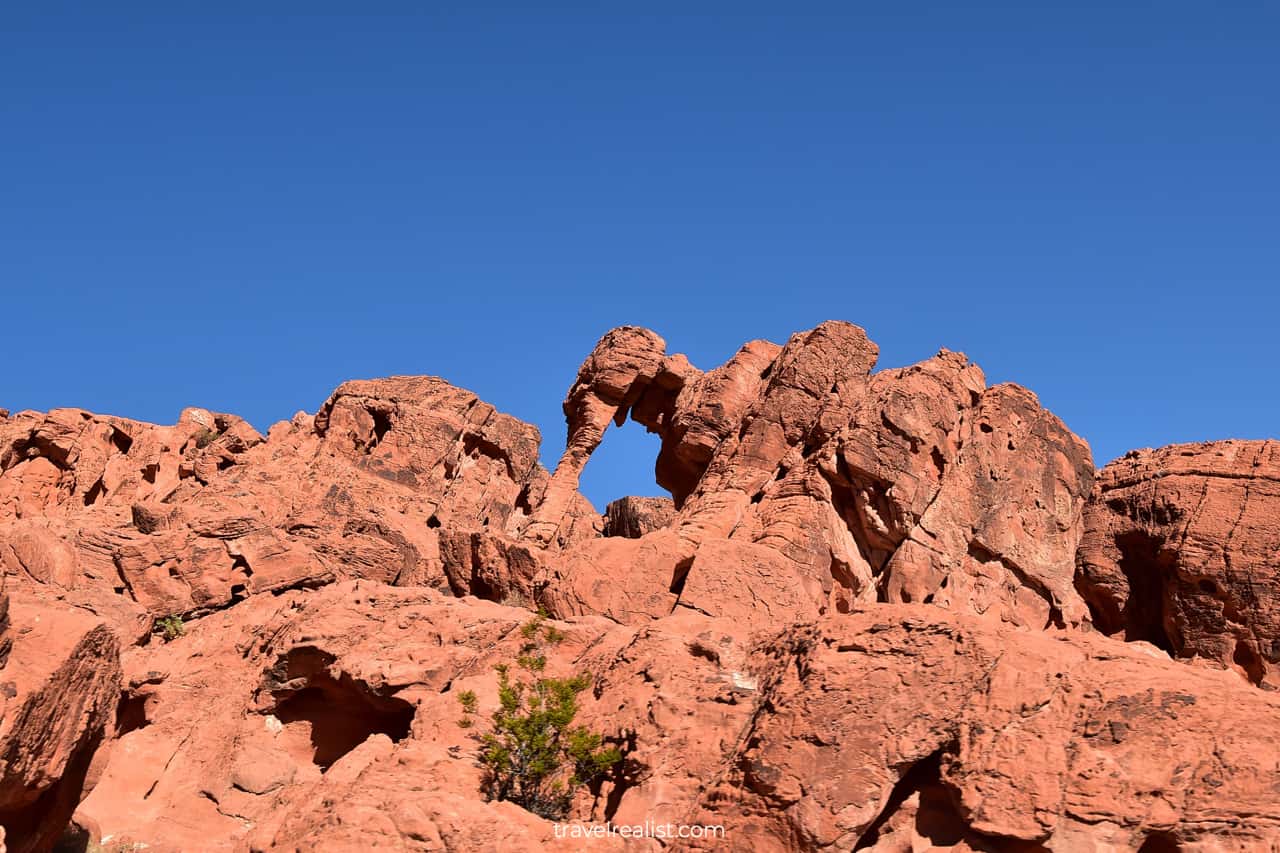
The next no-name parking lots alongside the Valley of Fire Highway mark different trailheads. You could hike the Elephant Rock Loop, Natural Arches Trail, Charlie’s Spring Trail, and Old Arrowhead Road.
The Cabins
The Cabins and Lone Rock are the park’s sights that do not require a hike to explore. You might want skip these sights. In the end, they are just picnic areas. But these stops offer so much more than picnic tables.
As the name suggests, the Cabins are the Civil Conservation Corps (CCC) stone buildings.
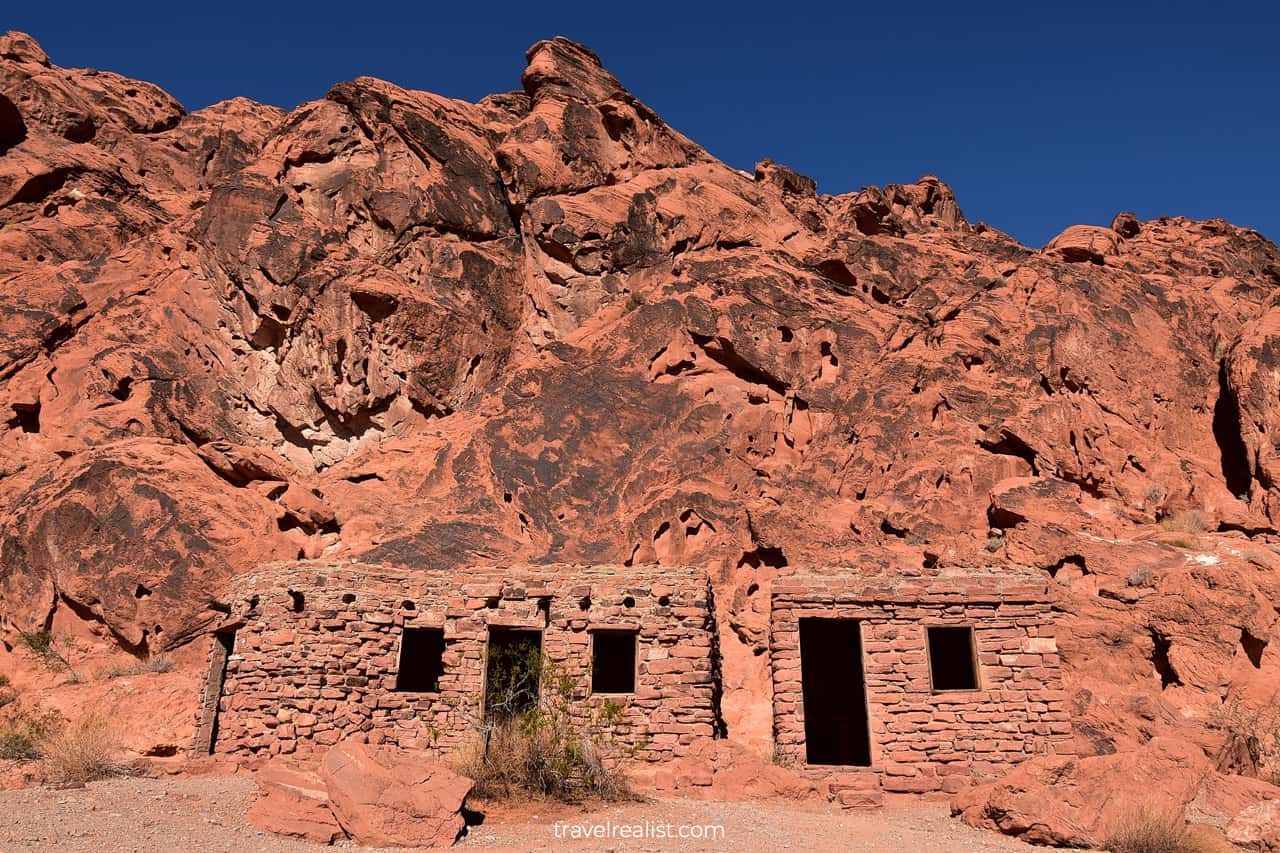
The Cabins picnic area also includes other places of interest. A keen eye would spot petroglyphs on the rocks. These petroglyphs are just behind the Cabins.
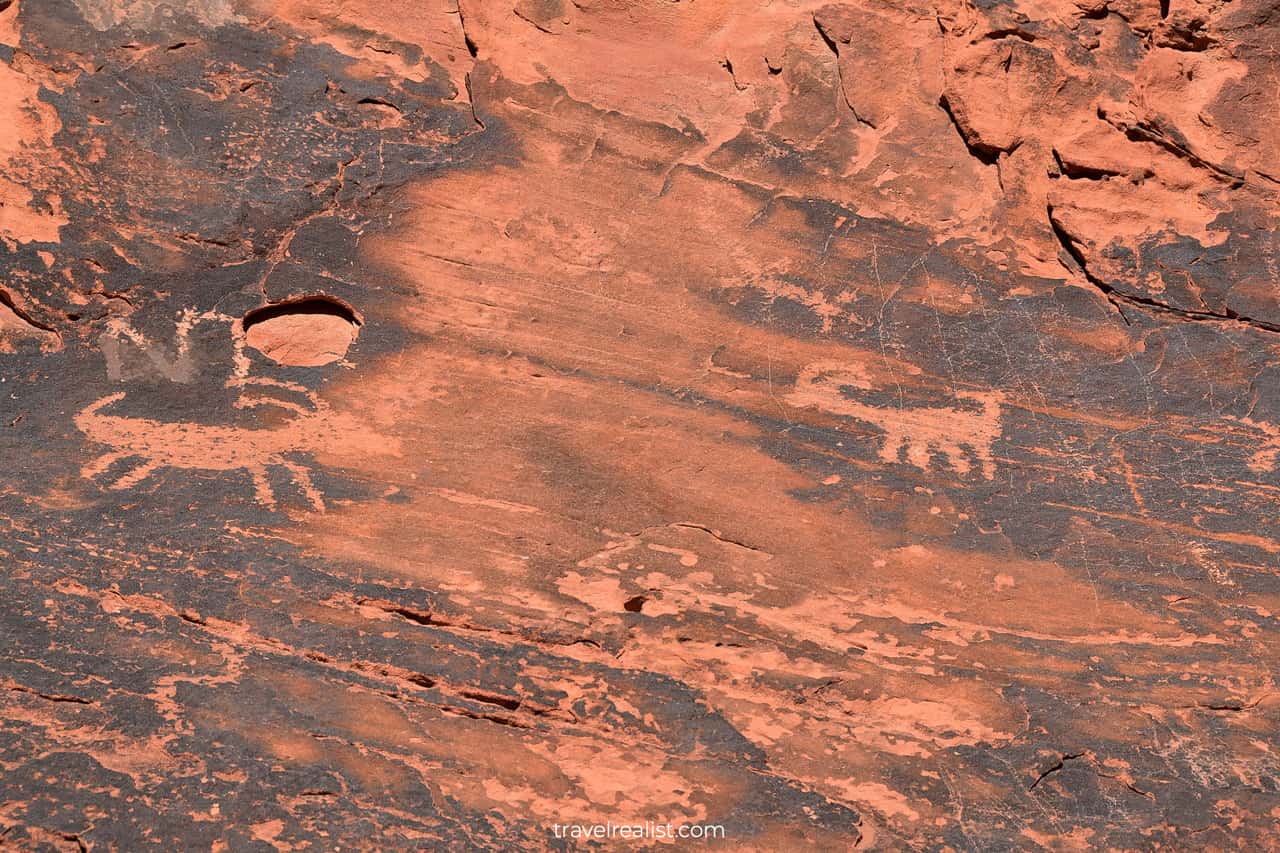
The area surrounding the Cabins is rugged and, somehow, picturesque and memorable.
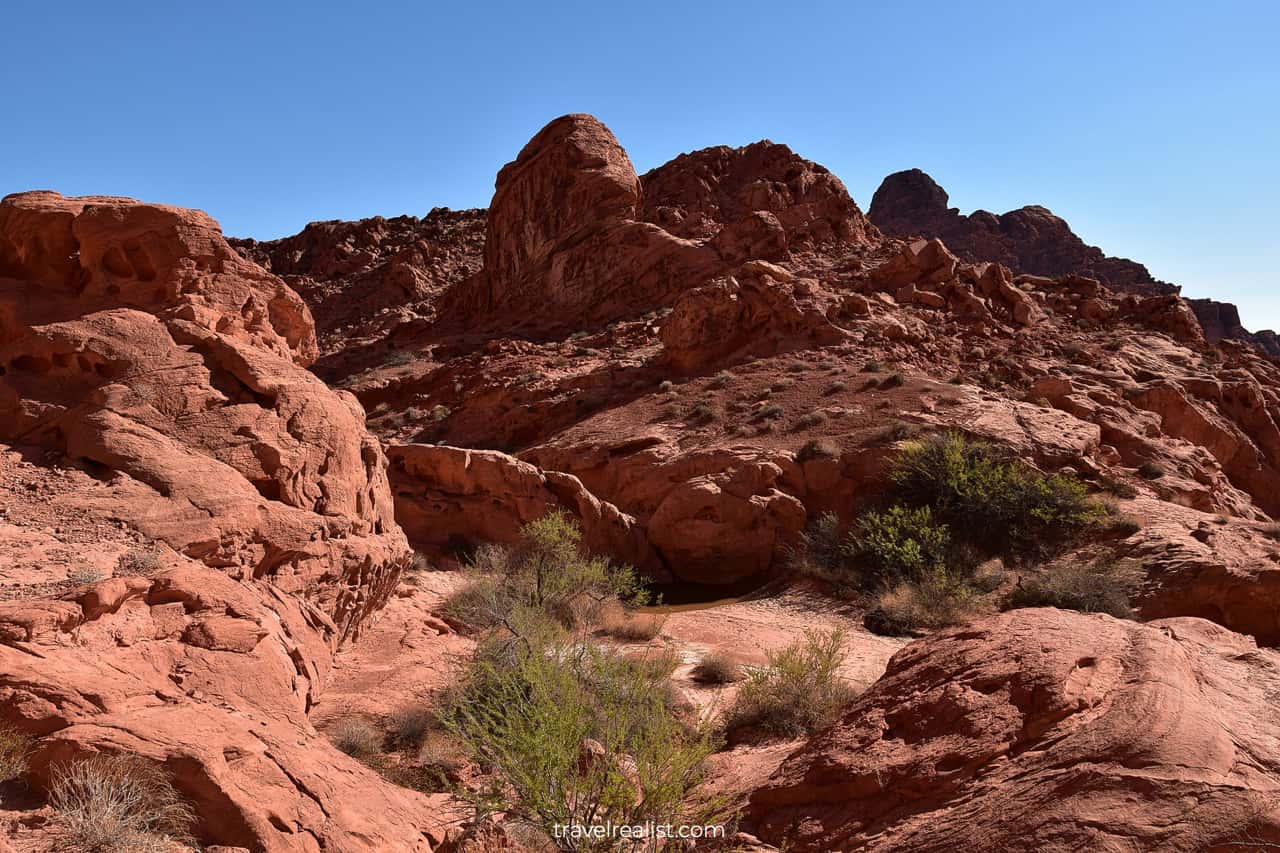
Seven Sisters
The Seven Sisters Picnic Area was is the next stop in the park. This area provides visitors with shade and tables to enjoy a snack.
As you probably guessed, seven large boulders dominate the view at this picnic spot. You could see different things in these formations. All depends on your imagination. But it is quite easy to spot a human head in this boulder.
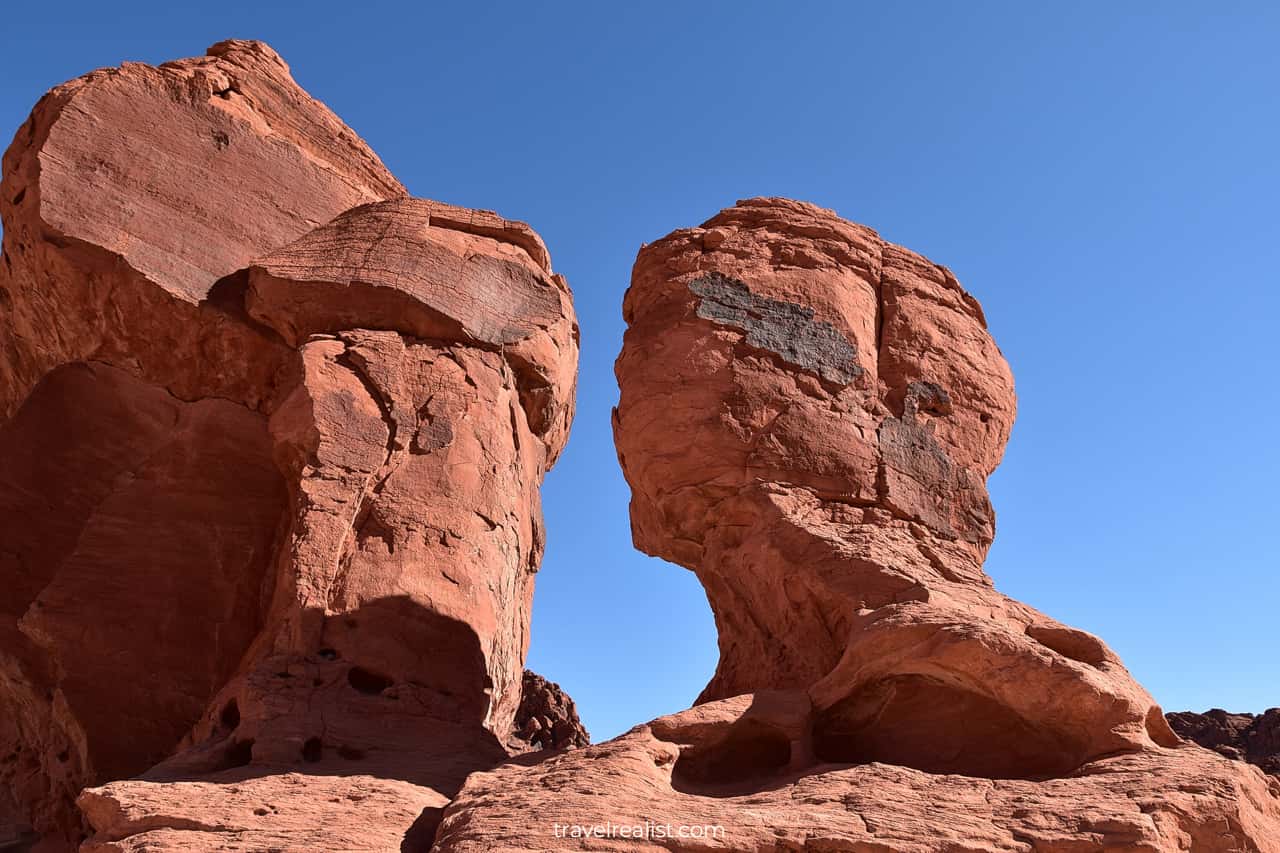
The Seven Sisters is the last park sight before the White Domes Road. You might also know it as the Mouse’s Tank Road. Both of these names refer to Valley of Fire’s signature sights.
White Domes
It is a good idea to drive to the White Domes parking lot. This lot is at the end of this 5.7-mi (9.2-km) road. This lot is a gateway to several trails to some of the park’s most well known formations.
The parking lot is relatively small. It fills up often. You would likely need to wait for a parking spot if you visit on a weekend. If this lot is full, you can park at at one of the earlier lots.
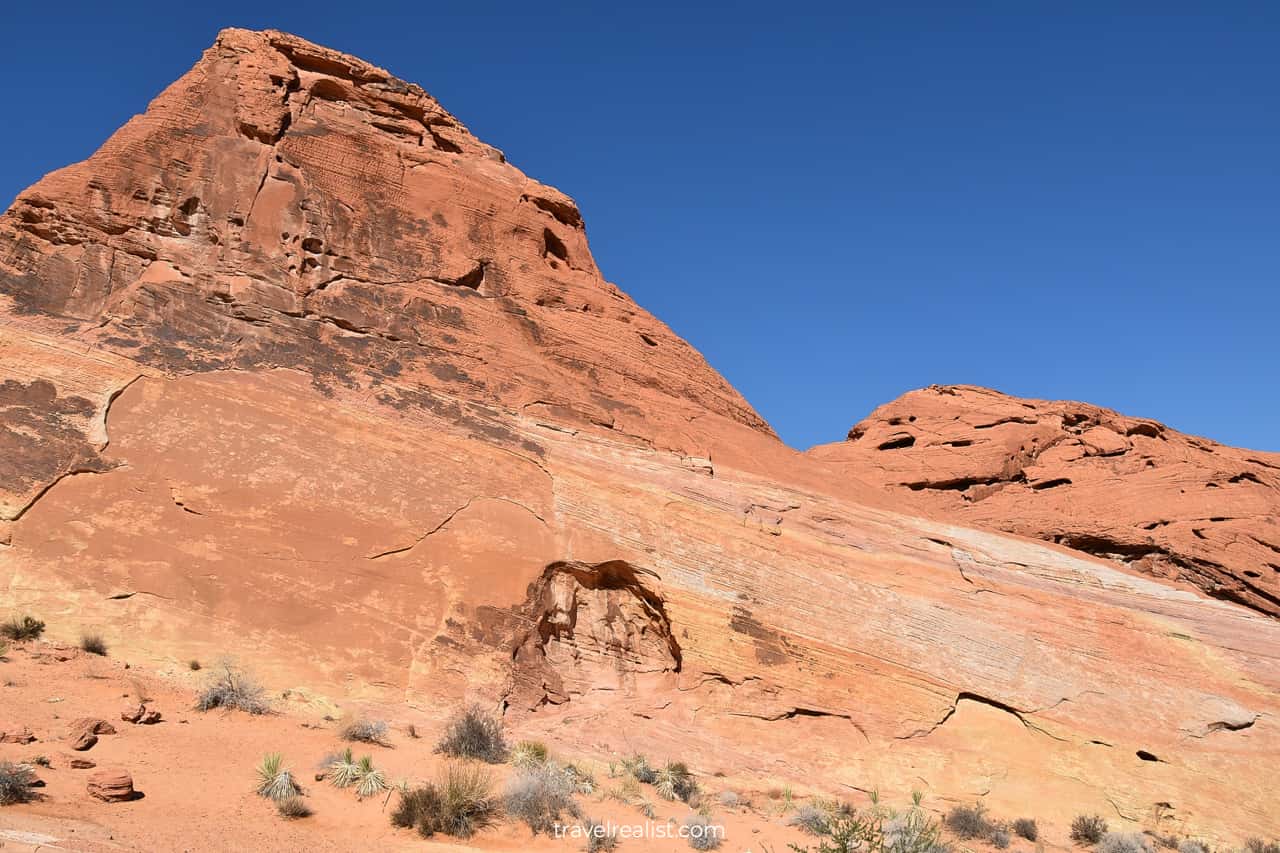
This Valley of Fire Day Trip Guide will cover this area in more detail.
You can take a shorter White Domes Loop or a much longer Prospect Trail. The easy 1-mile (1.6-km) White Domes Loop hike has beautiful white, pink, red, and rainbow formations.
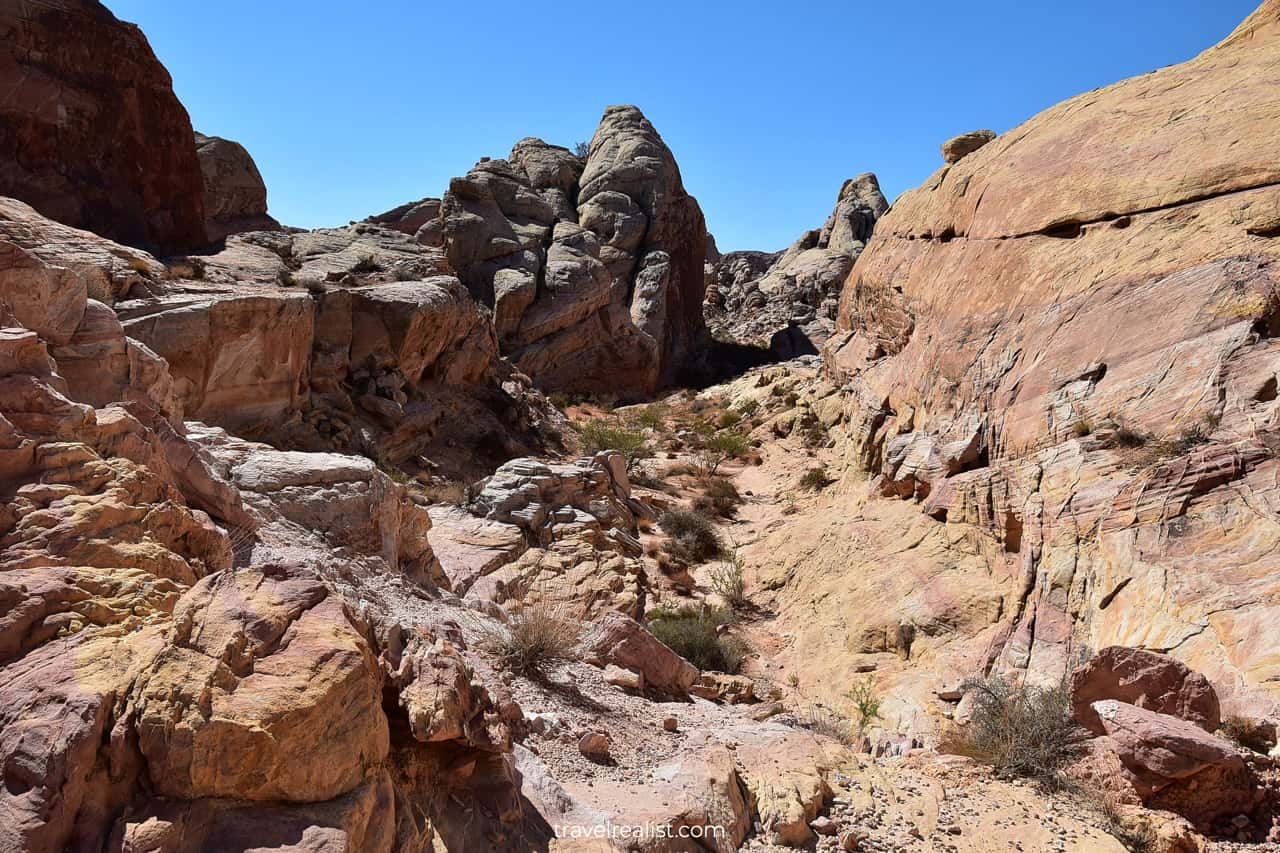
White Domes Slot Canyon
About halfway into the trail, you will enter the White Domes Slot Canyon. This is one of the major sights in the park. The canyon is just a few hundred feet (meters) long. But it provides shade.
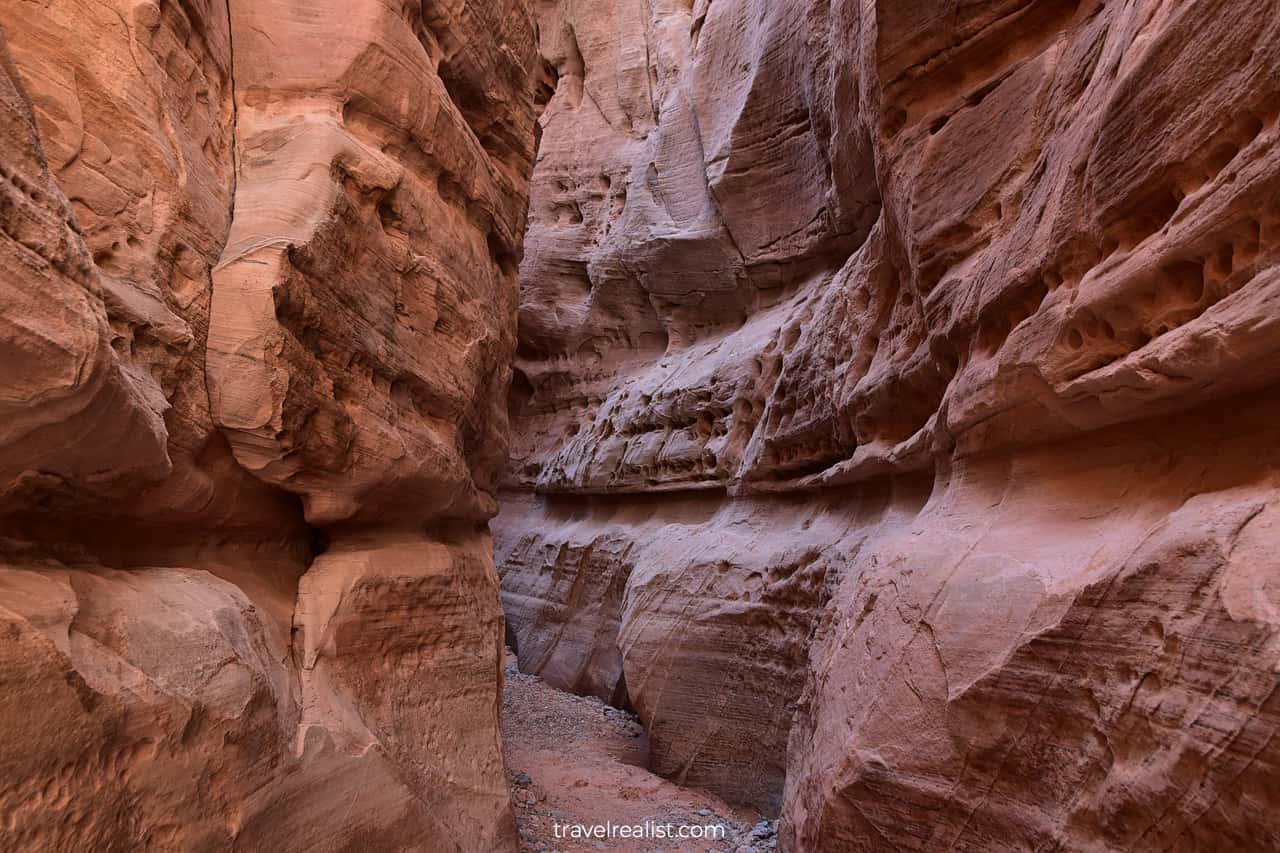
The slot canyon views are breathtaking. You should try to time your exploration when other hikers have already exited or not yet entered the canyon.
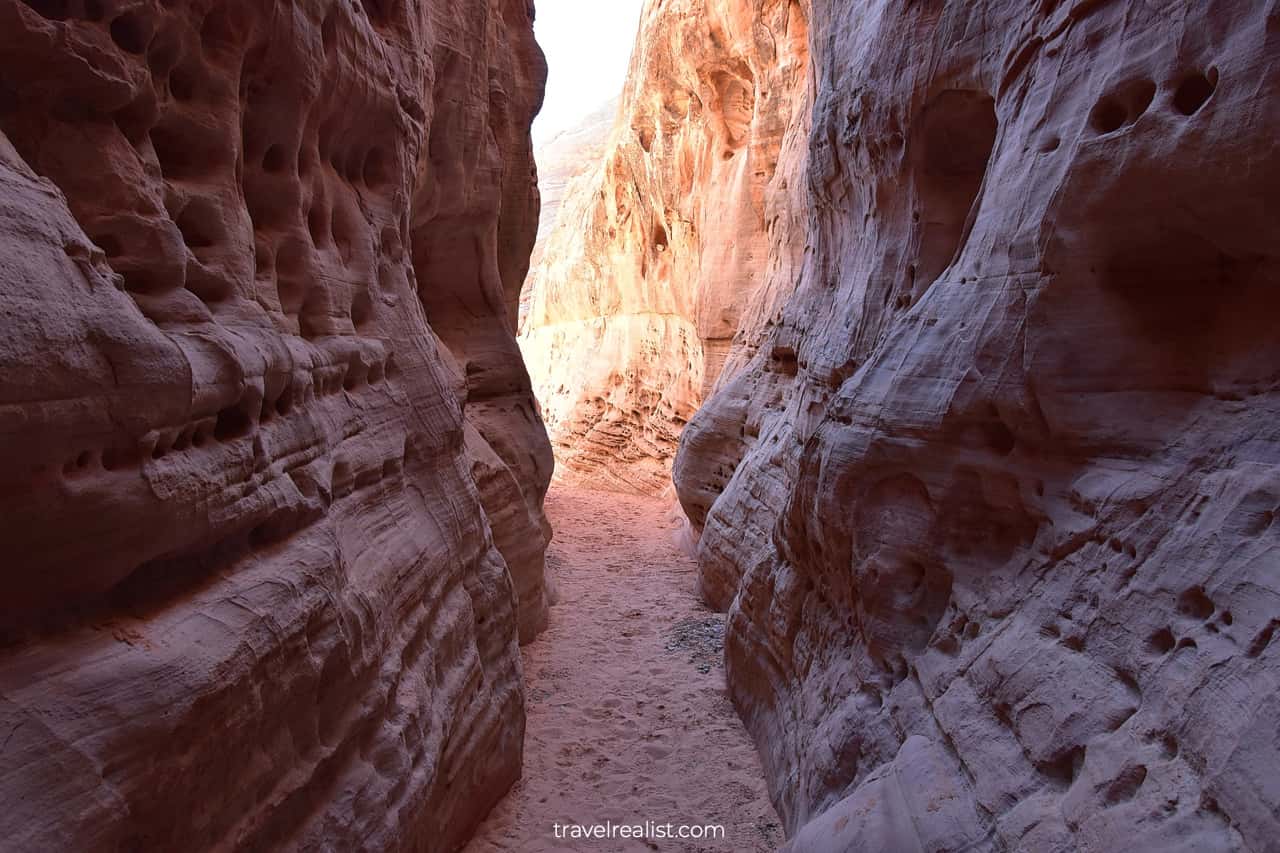
The canyon walls widen as the White Domes trail continues. The trail will soon bring you the Prospect Trail junction.
You can take that trail back to the parking lot. Or you could continue east to the next slot canyon.
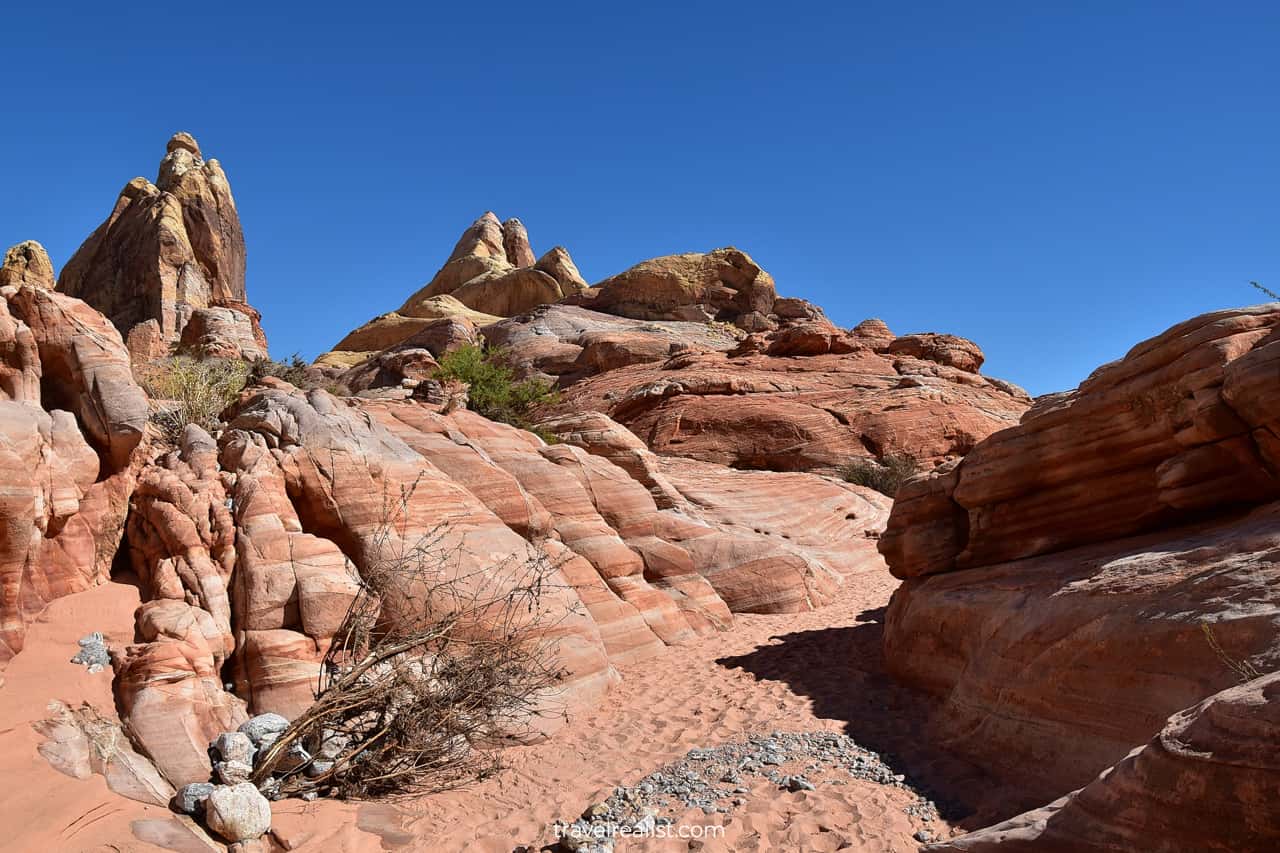
Kaolin Slot Canyon
The Kaolin Slot Canyon is not as narrow and twisted as slot canyons in Cathedral Gorge. But the Kaolin Slot Canyon rivals famous slot canyons, like Antelope Canyon, Capitol Gorge in Capitol Reef, and Snow Canyon.
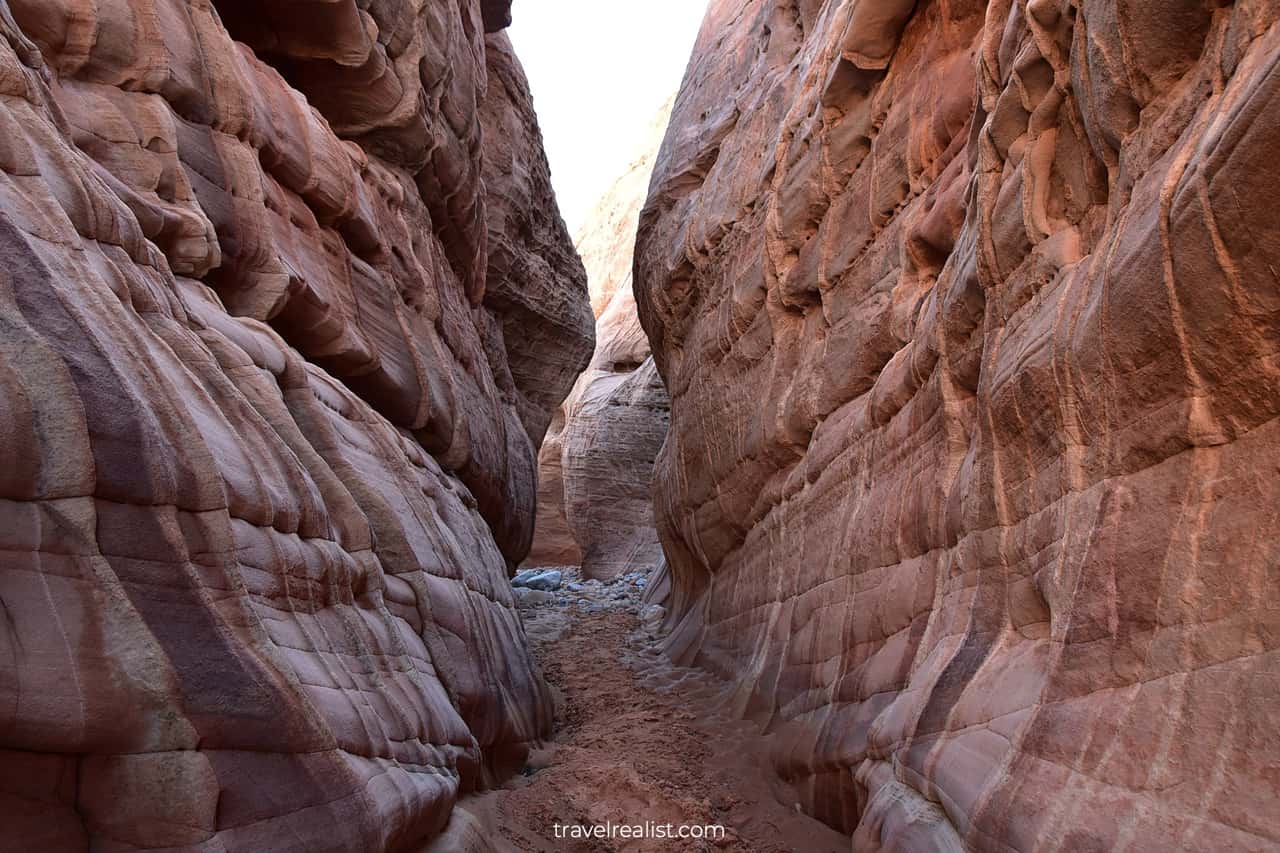
The red Aztec sandstone is on full display in the Kaolin Slot Canyon.
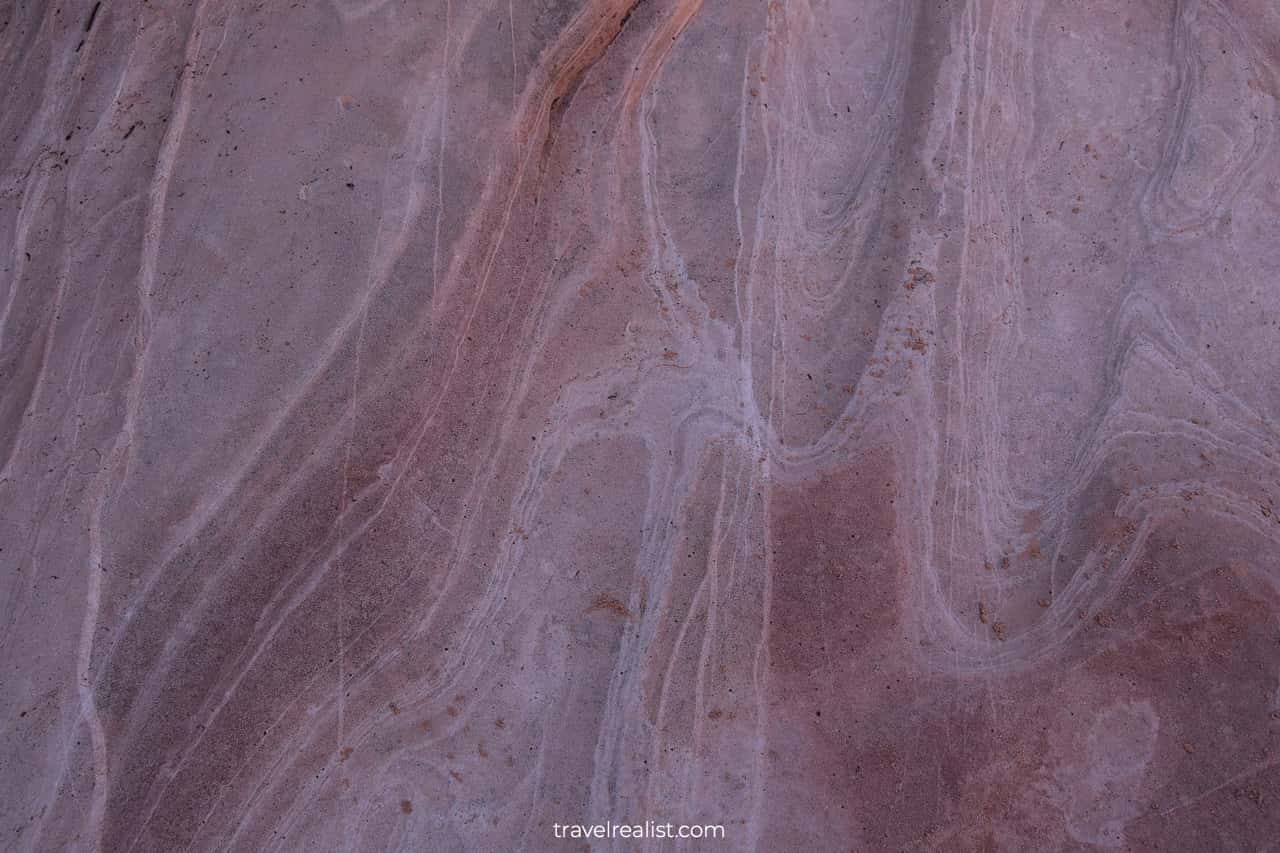
Prospect Trail
The Prospect Trail provides a scenic shortcut to the parking lot.
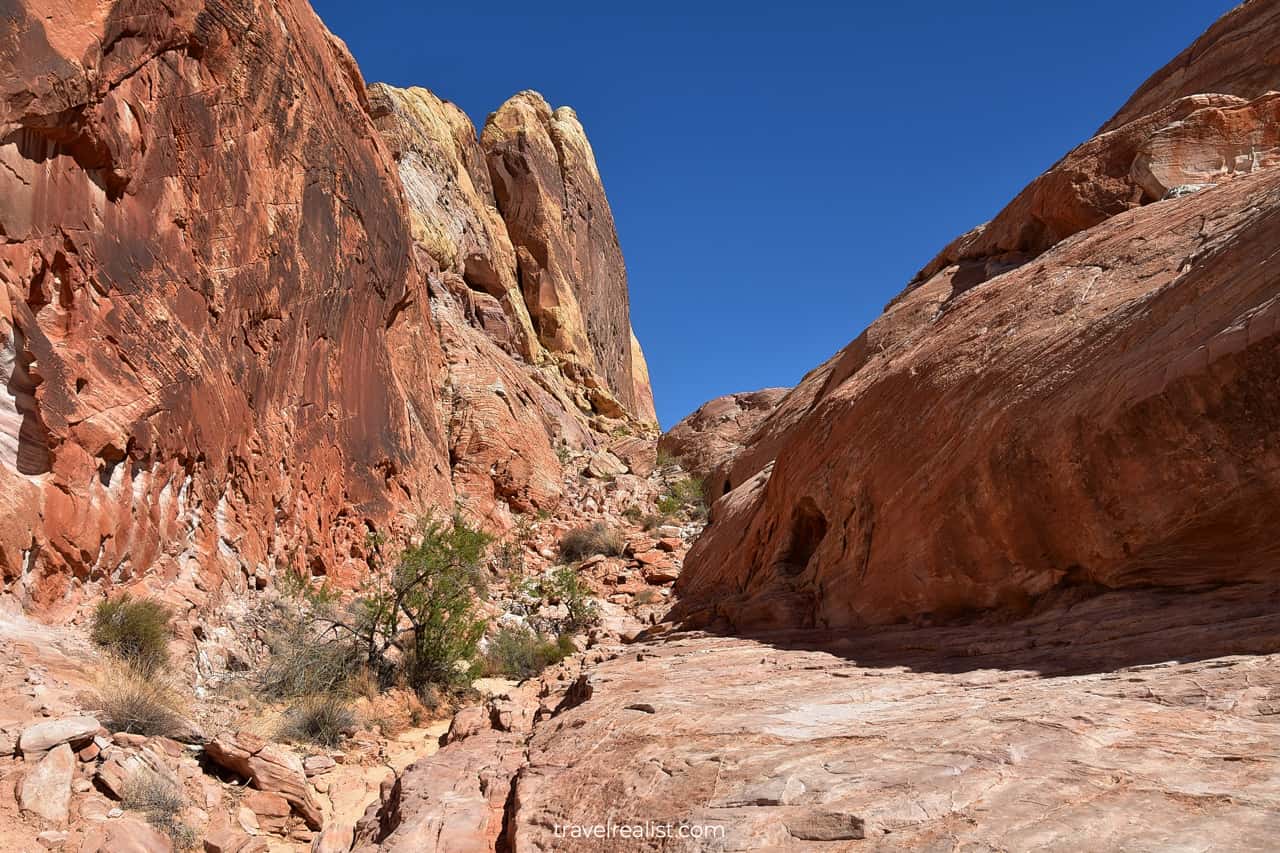
The hike proceeds via stone stairs and involves some elevation gain. This hike is not accessible. The beautiful valley views act as the only reward for hiking in a gruesome heat.
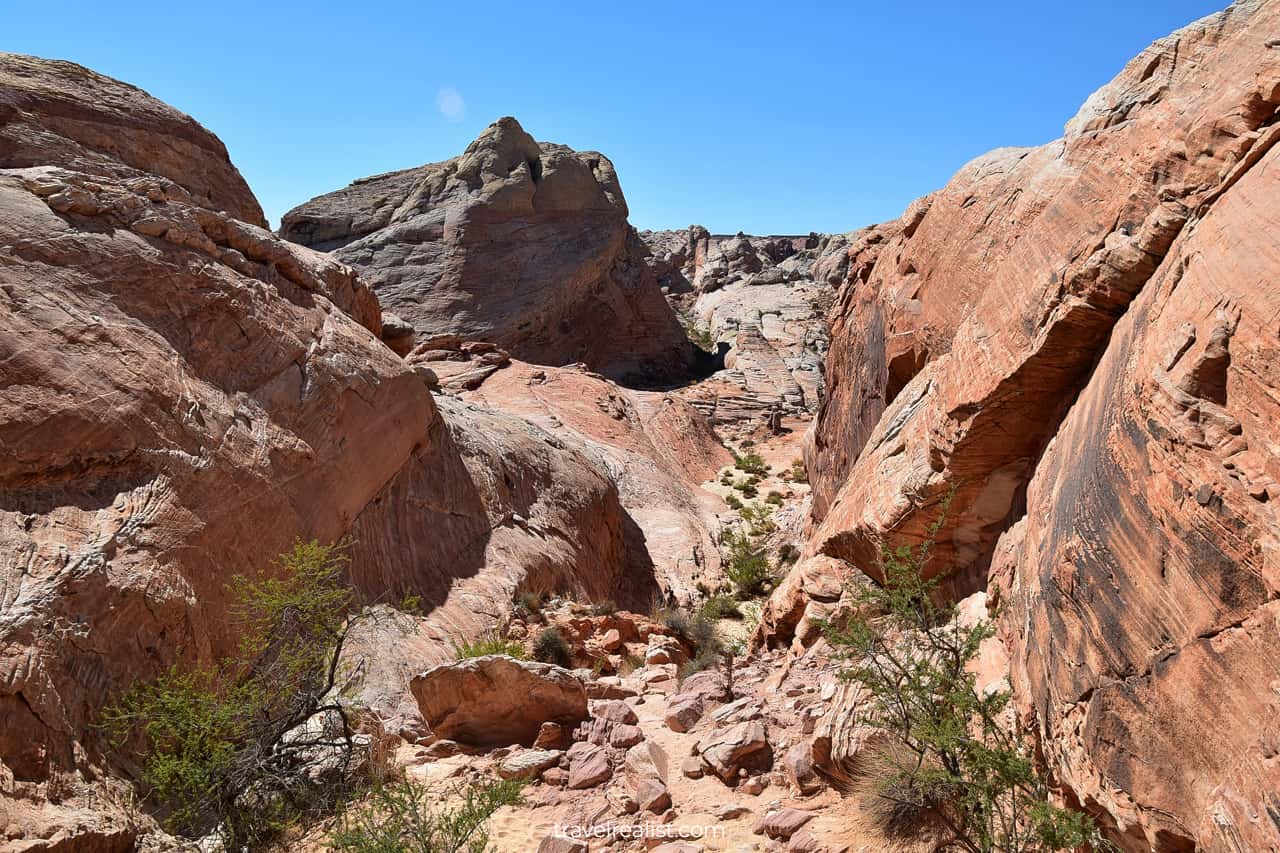
The Prospect trail includes a sandy section right before the parking lot. It resembles the sand dunes in Snow Canyon and Great Sand Dunes.
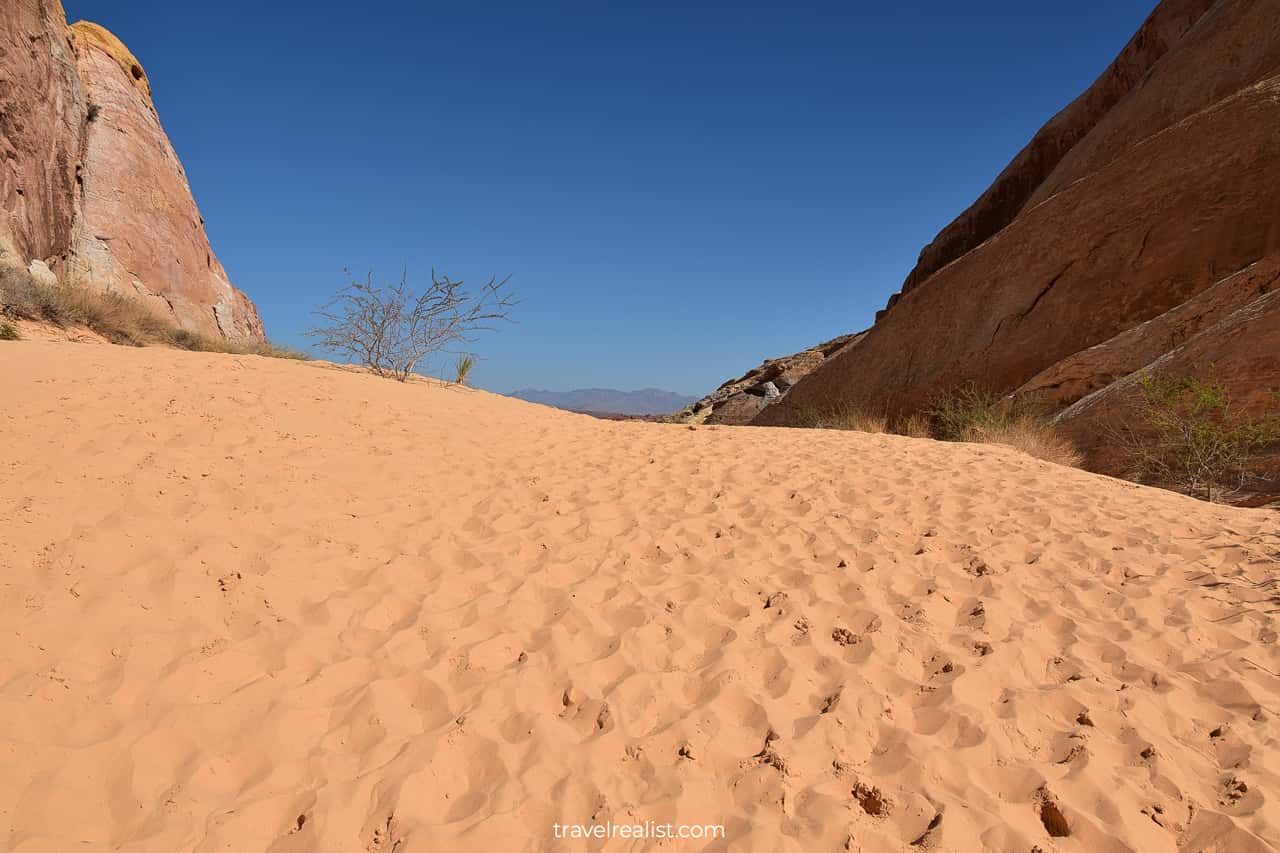
Fire Wave
As you drive back you could explore the park’s other sights. The Fire Wave is the best known formation in the park.
But the park closes both the Fire Wave and Seven Wonders trails due to excessive heat. You cannot hike these trails between June 1st and September 30th of each year. Anyone who attempts to hike them during this period could face prosecution for trespassing.
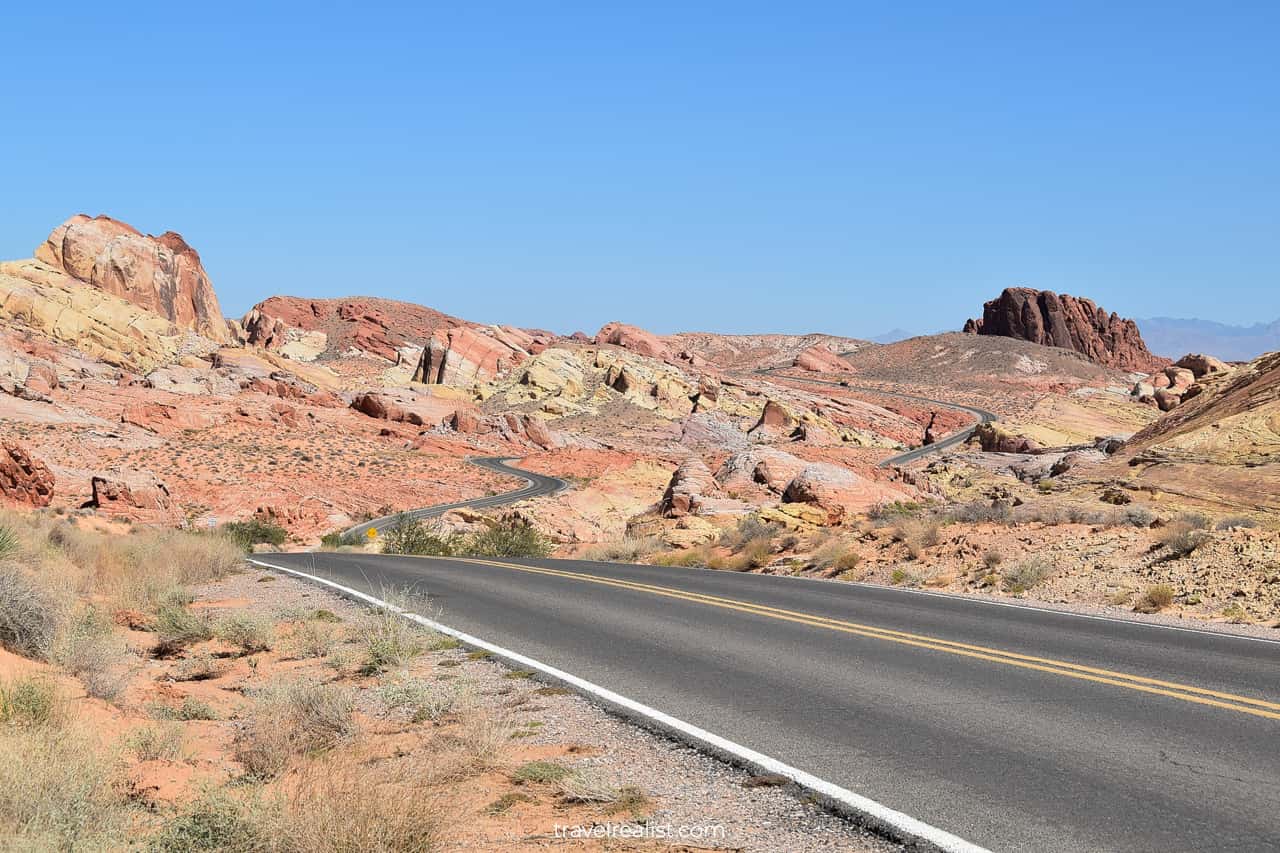
Pastel Canyon
The White Domes Road proceeds through the Pastel Canyon. This park area is majestic to view. It is also a prime location for wildlife spotting. Bighorn sheep are a common sight in the Pastel Canyon.
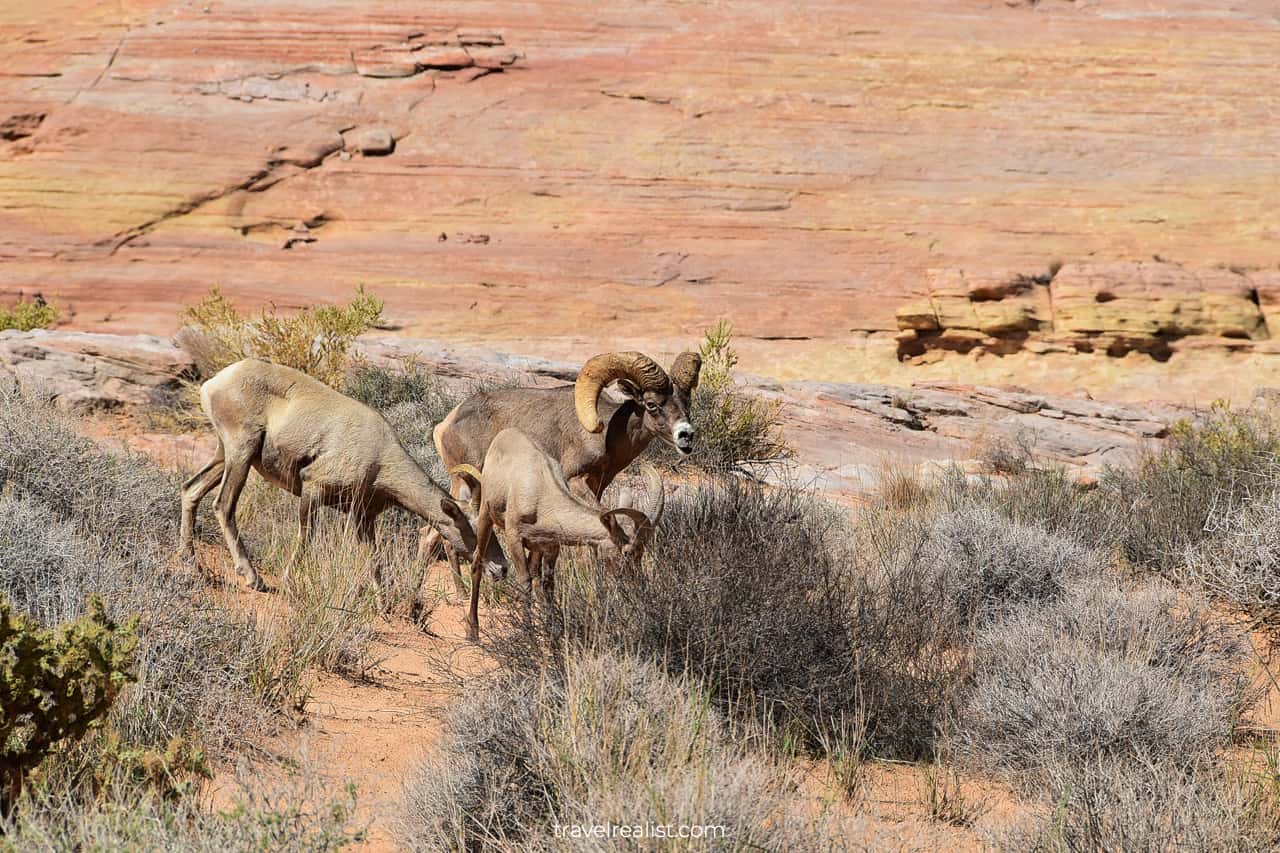
Fire Canyon
The Fire Canyon is a short drive away from the White Domes Road. This impressive canyon has enormous red, yellow, and white formations.
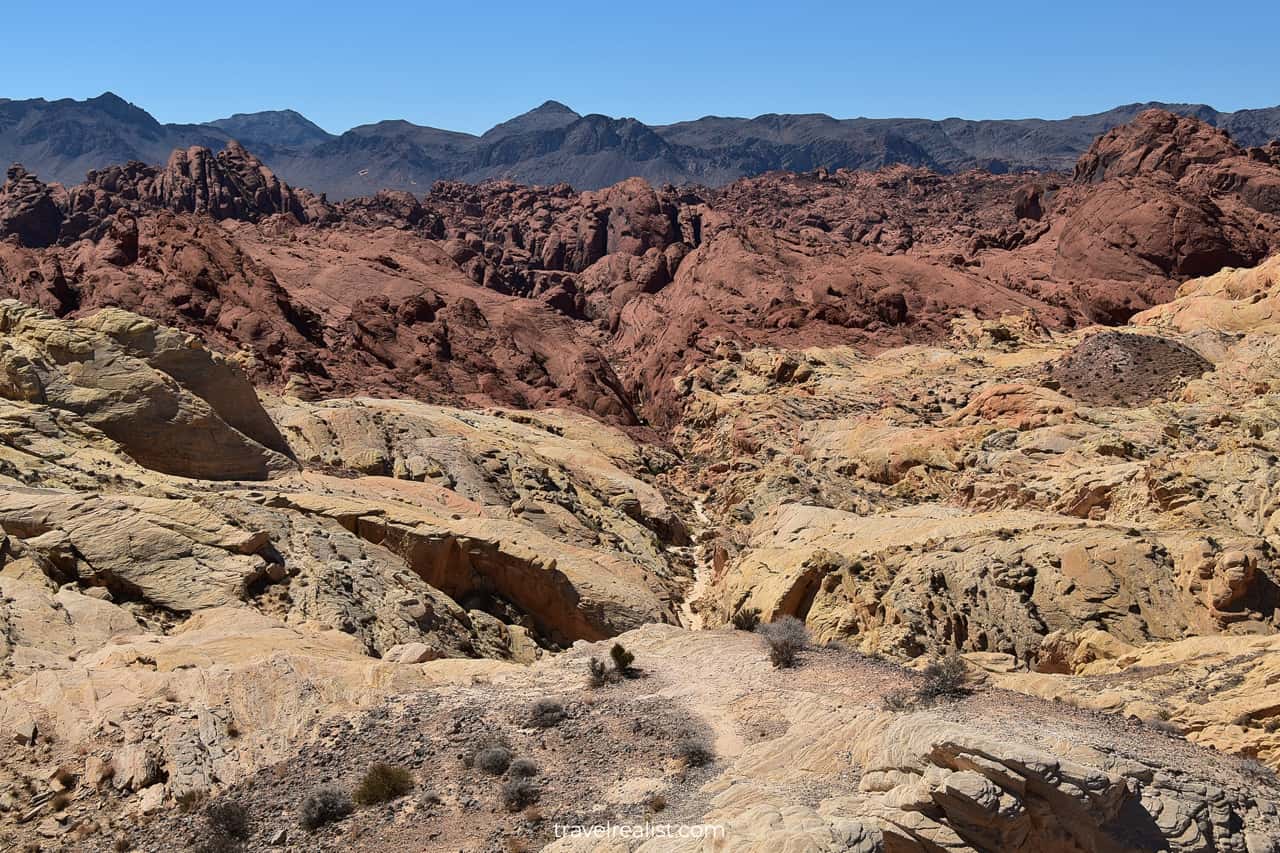
Silica Dome
The viewpoint also has a short hike to the Silica Dome.
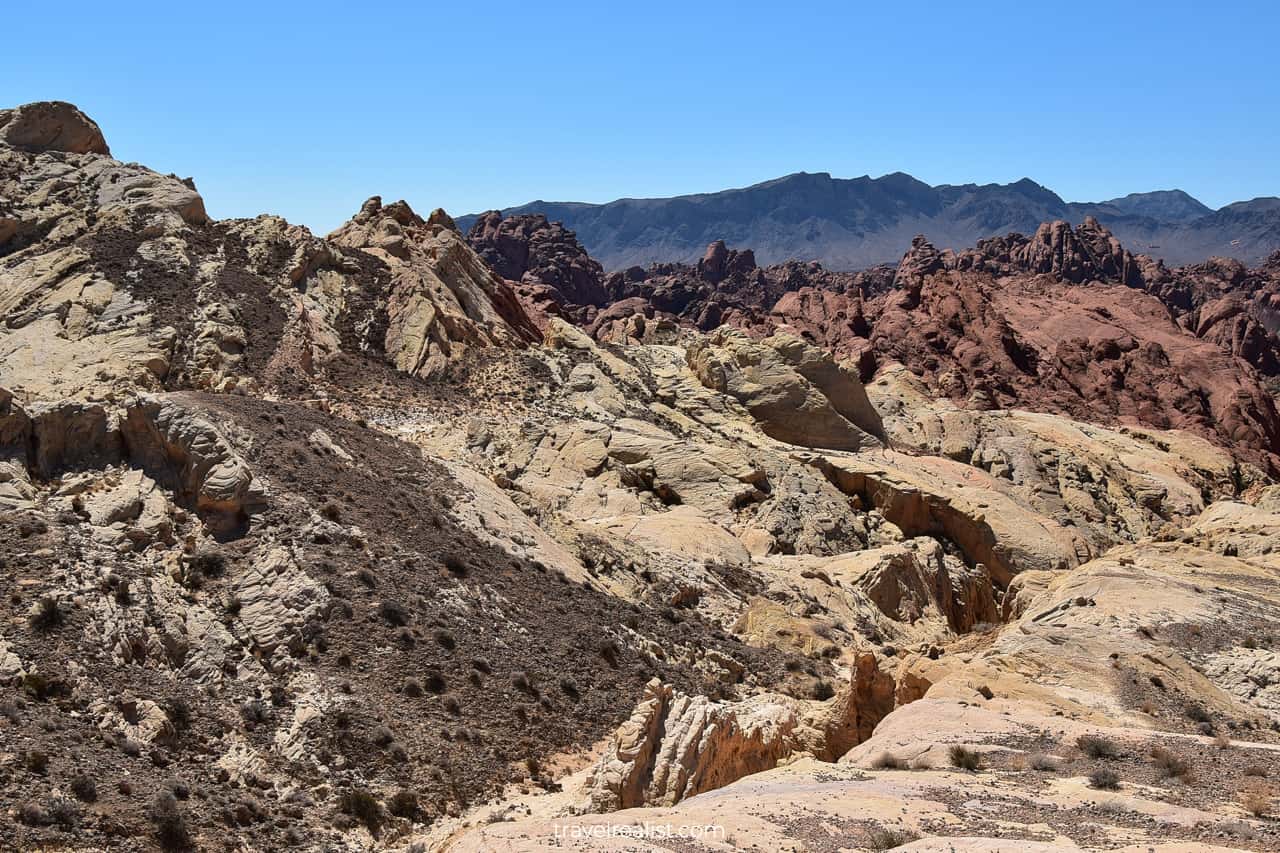
Rainbow Vista
You could explore the Fire Canyon from a different angle at the nearby Rainbow Vista. This 1-mile (1.6-km) hike also has several scenic formations along the way.
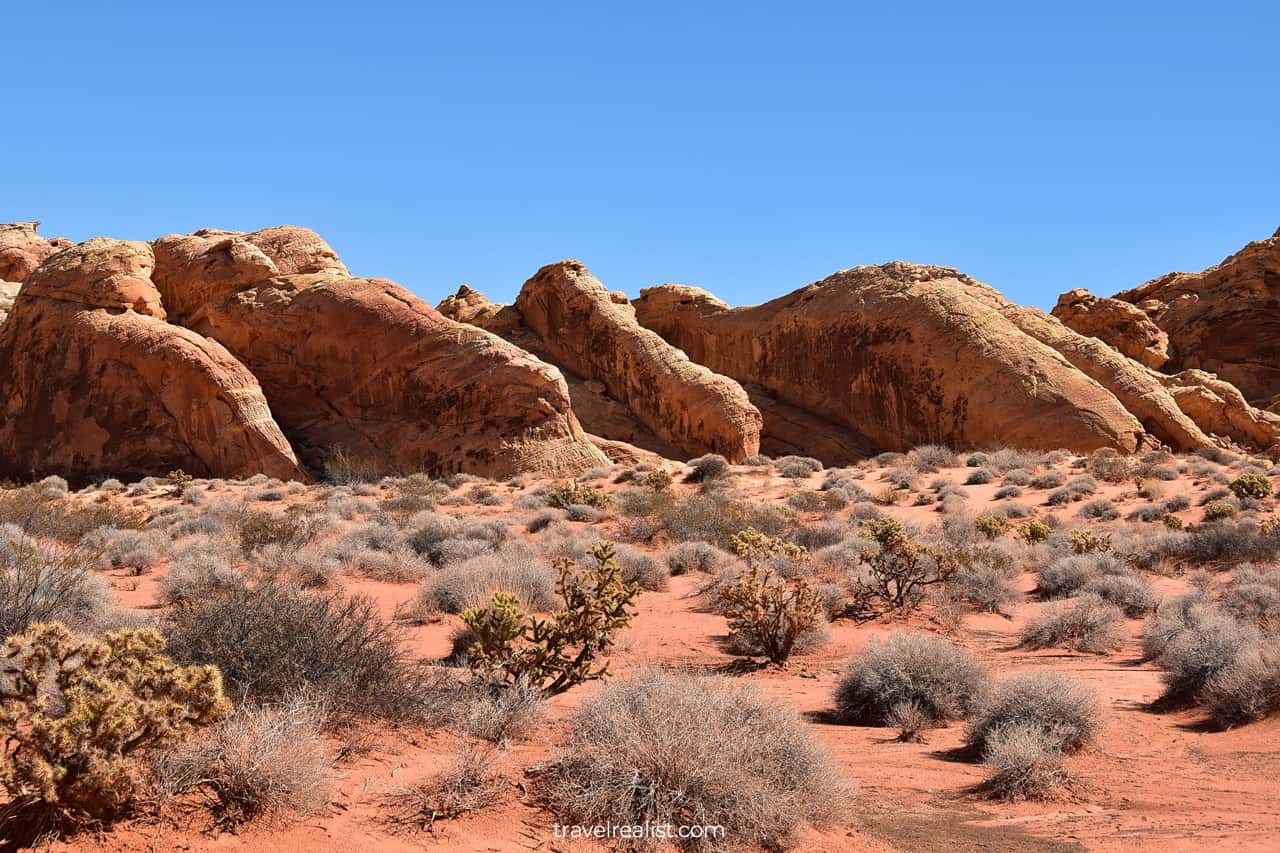
Mouse’s Tank and Balancing Rock are other formations along the White Domes Road. They turned to be less impressive in person compared to the photos.
Atlatl Rock
The Atlatl Rock could your next stop in Valley of Fire State Park. This rock has a petroglyph wall. The petroglyphs are about 30 feet (10 meters) above the ground.
Getting to the Atatl Rock via a narrow metal staircase is not for the faint of heart. If you fear heights, you will not find this walk enjoyable.
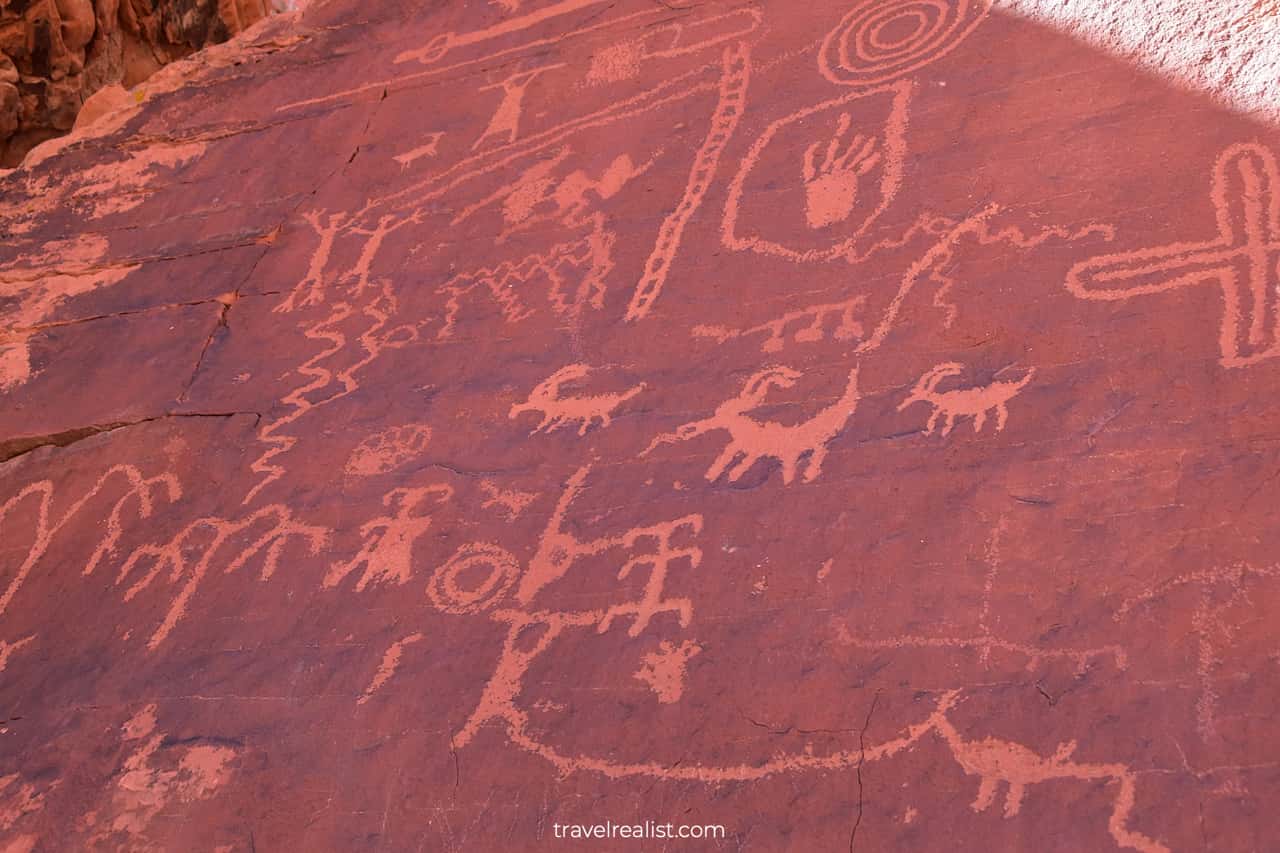
Arch Rock
If you continue on the Campground Road for a few minutes you will reach the Arch Rock.
This sight has a tiny unpaved parking lot next to a short trail. But you could get the best views of the Arch Rock from the road.
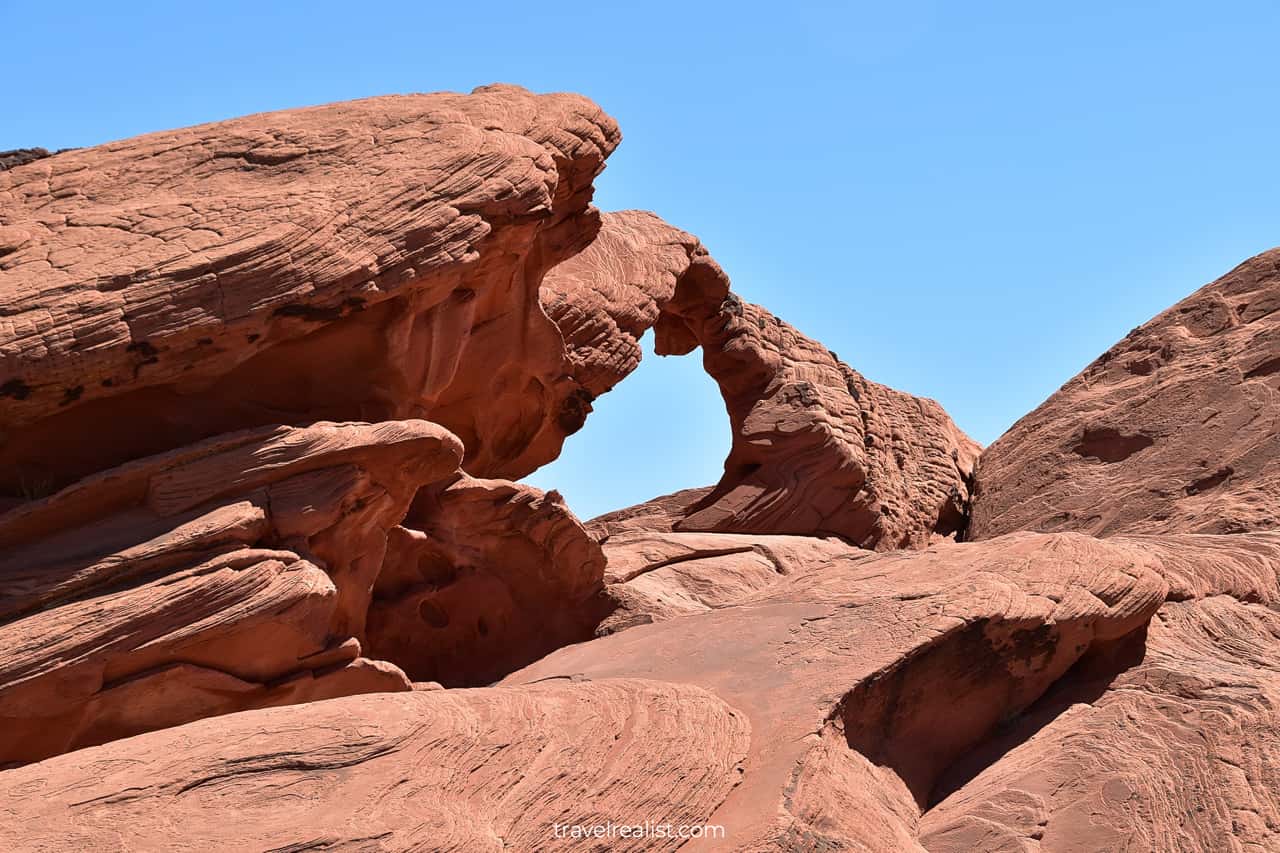
The back side of the rock reveales a double arch formation. It looks like a small copy of the Double Arch Alcove in Zion National Park.
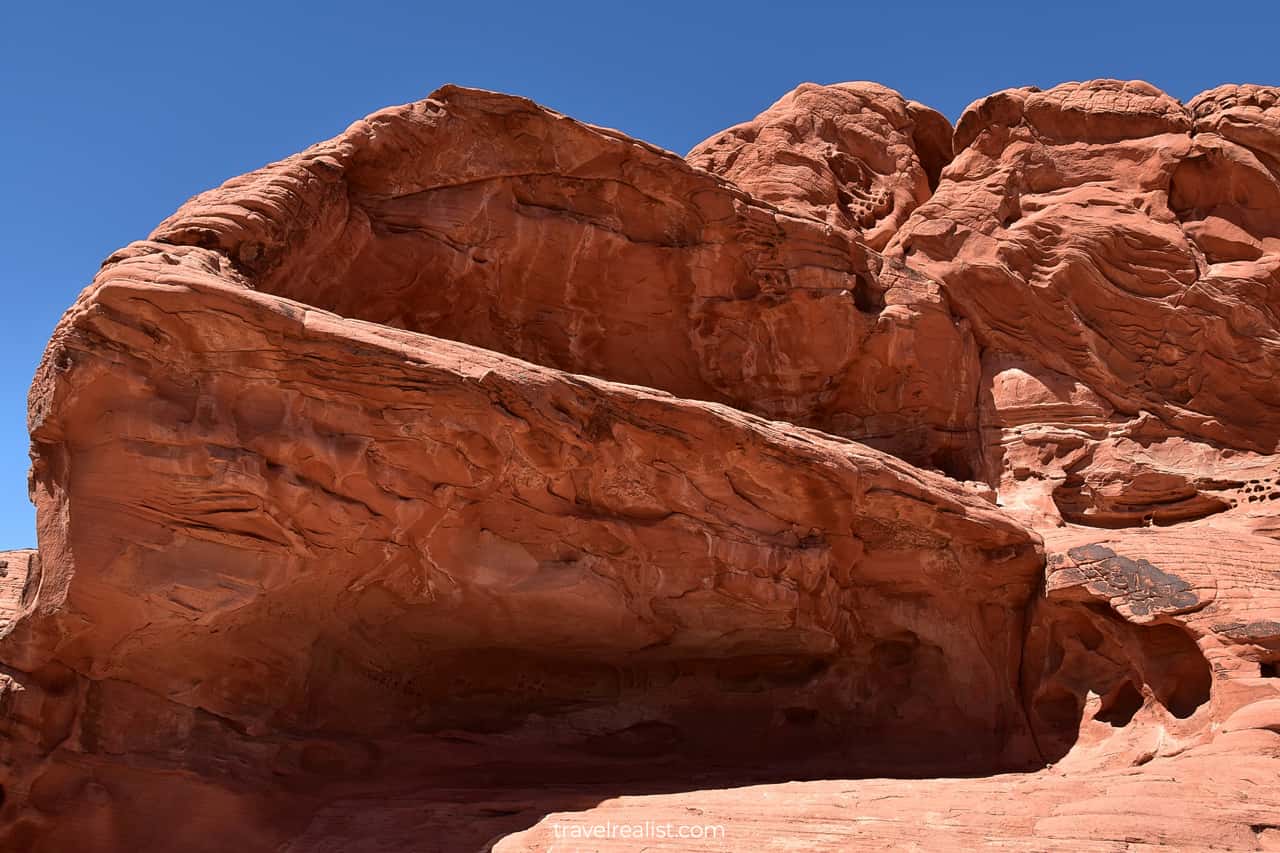
Petrified Logs
The Petrified Logs Loop requires a drive back on the Campground Road. You would also need to cross the Valley of Fire Highway. The last few hundred feet to the parking lot are on a rocky dirt road.
The bumpy ride is not worth it. The Petrified Log Loop is an utter disappointment.
- The Loop only features a handful of petrified logs.
- Each log is completely fenced off.
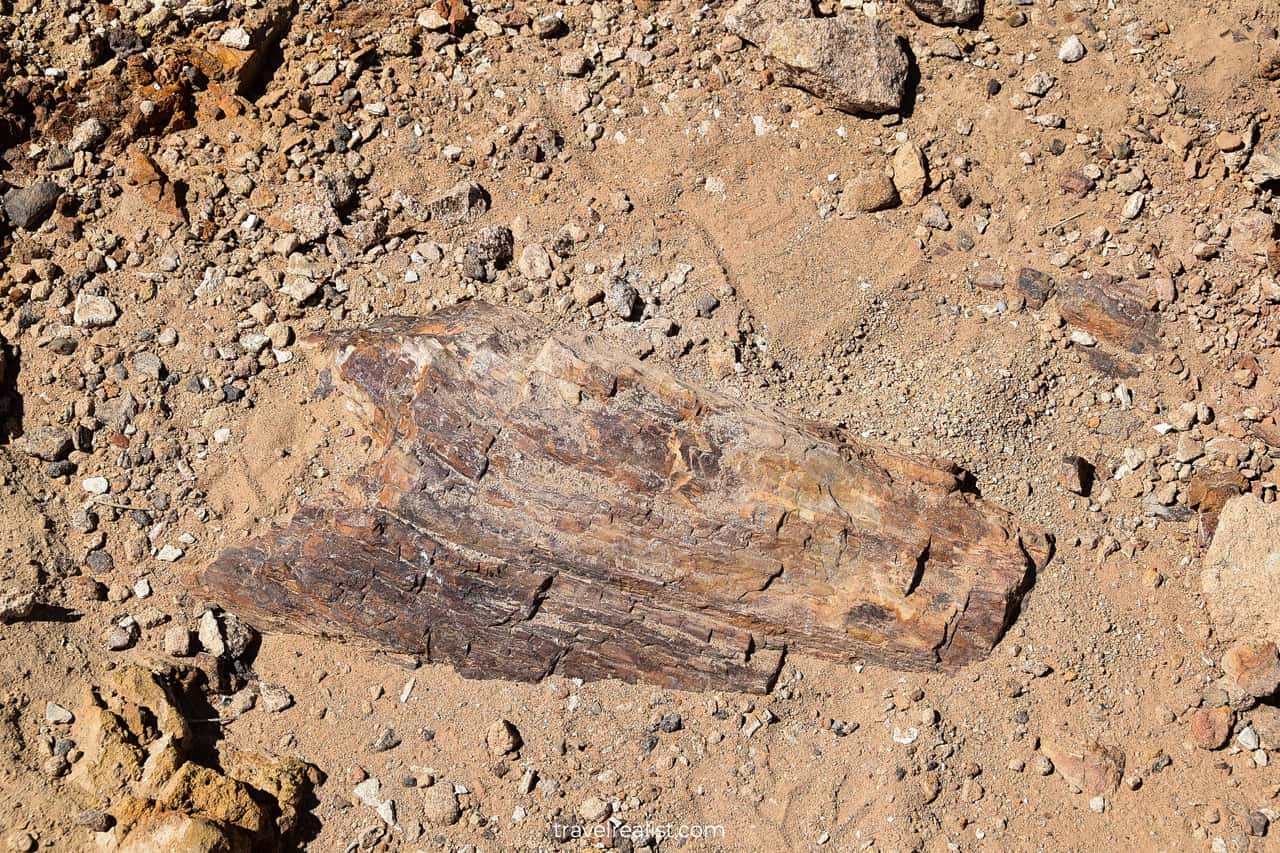
One could understand the need to protect the fossils from dishonorable tourists. But the metal fence makes exploring the petrified logs impossible.
The Petrified Logs Loop trail is not worth your time. For a real fossilized logs experience consider visiting Petrified Forest National Park in Arizona instead.
Beehives
Outside of the Old Arrowhead Road trailhead, Beehives is the westernmost sight in the park. It has several red rocks in the shape of beehives.
The Beehives viewpoint offers fantastic views of Valley of Fire. Multicolored stones and mountains create a beautiful combination.
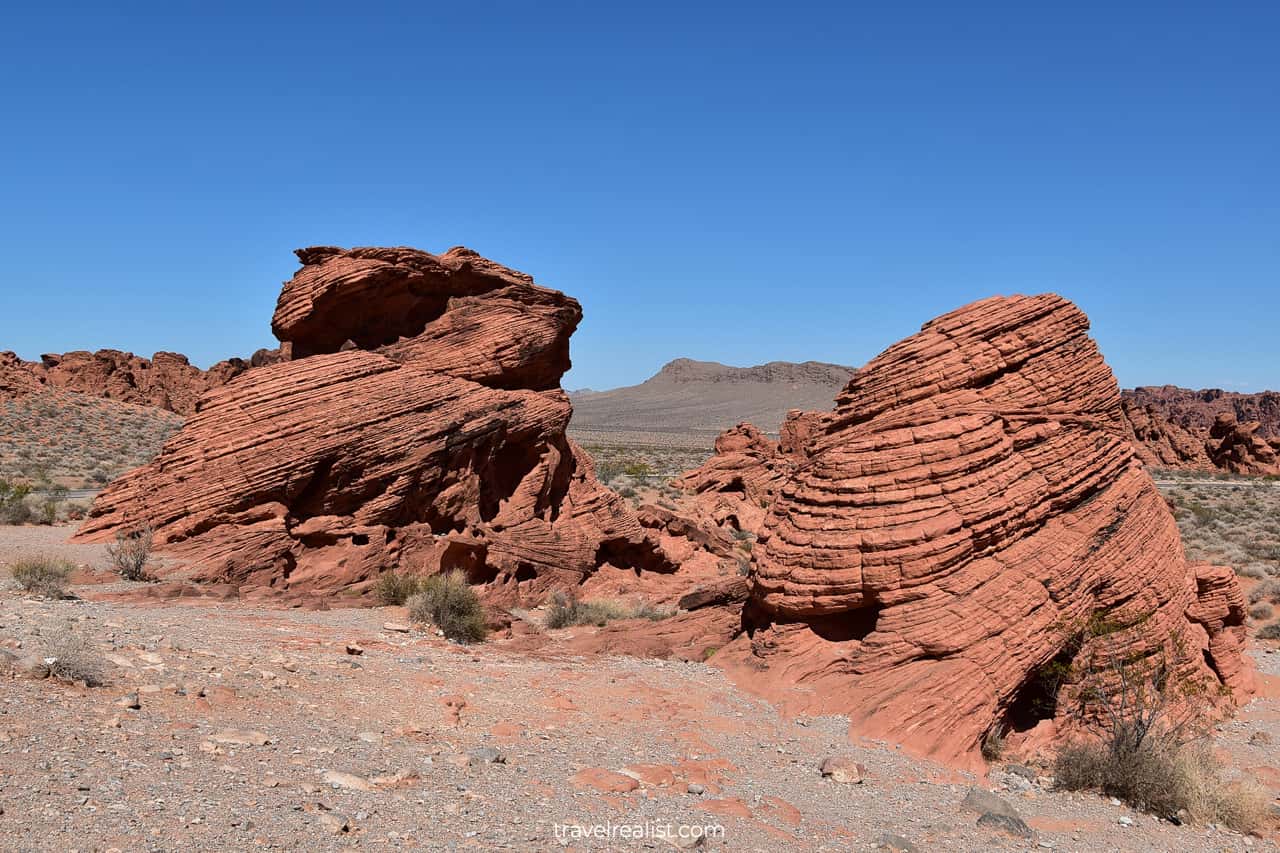
When you exit the park and drive towards the Interstate Highway I-15, consider stopping at an unnamed viewpoint. A beautiful mountain gap view would be a perfect ending to your Valley of Fire day trip.
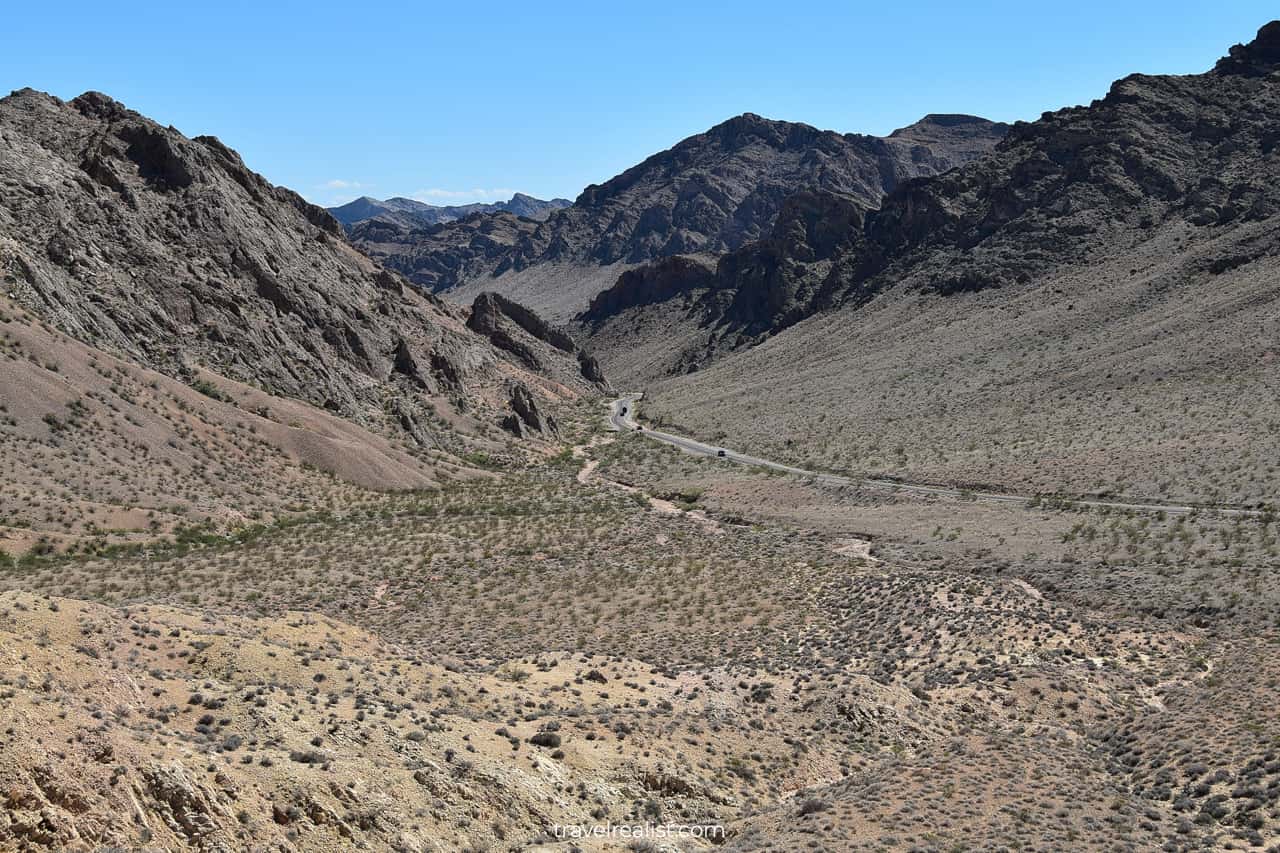
Continue with this Valley of Fire Day Trip Guide to learn more about ways to get to the sights, entrance requirements, and places to stay.
Getting to Valley of Fire
Valley of Fire State Park is an hour northeast of Las Vegas.
- Reaching the park involves first a 30-mile (48-km) drive on Interstate Highway I-15. You would then need to drive another 15 miles (24 km) on the Valley of Fire Highway.
- You can also reach the park via NV-167 or NV-169 highways. These highways proceed via other parks, like Lake Mead. These parks require additional fees.
This short distance, high gas and car rental prices might tempt you into taking a rideshare to Valley of Fire. This is not a good idea. The park is massive. And you will have difficulty getting a ride back.
Where to Stay
Valley of Fire’s close proximity to a large city makes lodging search very straightforward. Staying in Las Vegas is really a no-brainer when visiting Valley of Fire.
Vegas is a true tourist mecca. Therefore, you could pick from a lot of places to stay to find one that meets your expectations.
With numerous events taking place in Vegas, you need to approach lodging selection strategically.
- A more central location could enable you to visit a game or a show after visiting the park.
- The timing of your trip also plays a role. Large industry conferences or popular shows could greatly reduce availability at Vegas hotels.
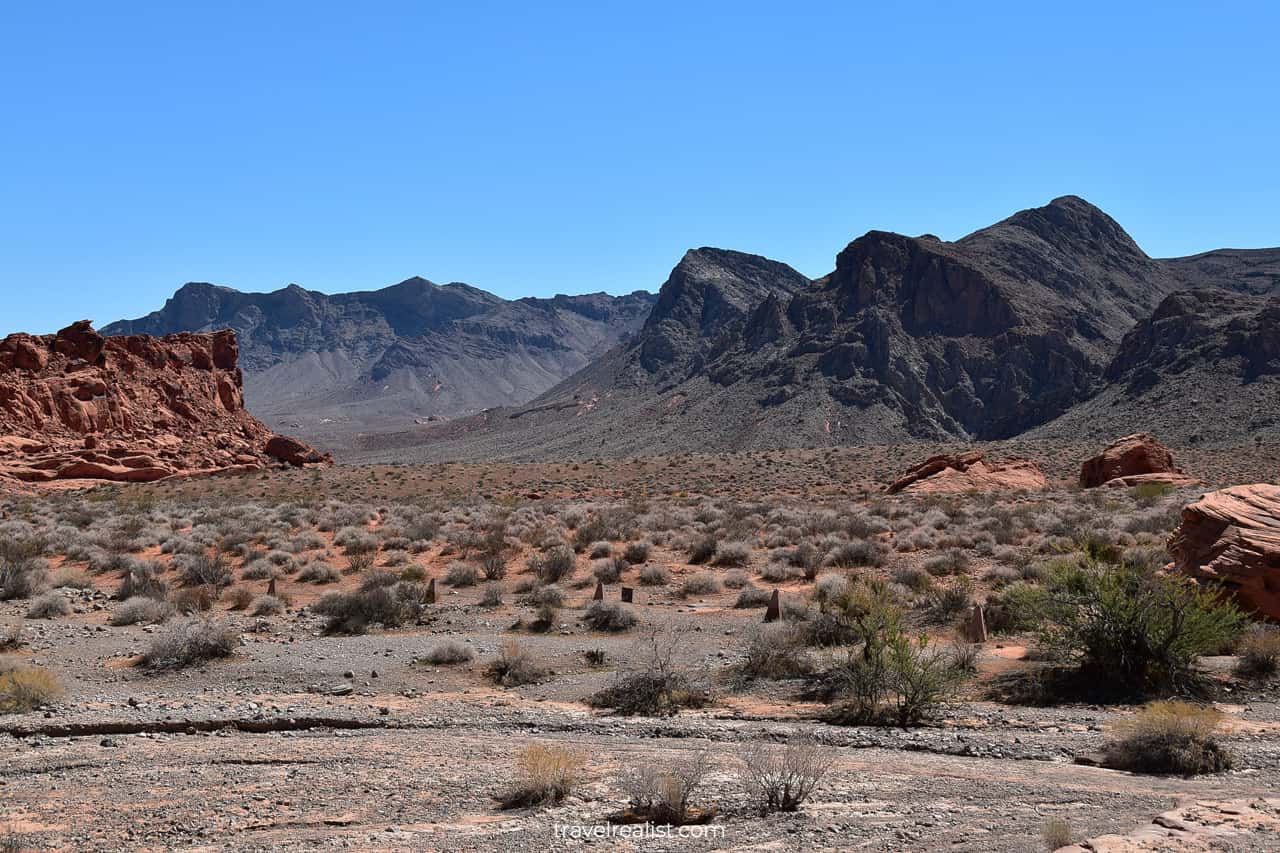
Entrance Requirements & Passes
Valley of Fire State Park is open for day use every day from sunrise to sunset. Campers with reservations can access the Atlatl Campground around the clock.
Valley of Fire is a state park that charges different fees for Nevada residents and non residents. The day use fees are $10 and $15 per vehicle, respectively.
Another option is to purchase an annual pass. Nevada’s annual entrance permit costs $100. It provides access to all Nevada state parks and sites for a year. A higher entrance fee to Valley of Fire State Park could help get the permit’s value back faster.
Takeaways: Valley of Fire Day Trip
Valley of Fire State Park is a perfect day trip destination from Nevada’s largest city. The number of various sights at this state park makes the $10 ($15) fee feel like a bargain.
This Valley of Fire Day Trip Guide aimed to help you make the right selection of things to do.
There are also a few additional tips for you enjoy your time in the park.
- Budget enough time to explore the park’s wonders during the daytime.
- Plan for excessive heat during every season not just in the summer.
- Try to visit on weekdays and early in the day to avoid crowds.
- Respect the park’s rules and signs.
- Do your part in protecting formations and wildlife.
Take a look at our Valley of Fire Video Guide and visit our YouTube channel for the latest videos.
Frequently Asked Questions
Valley of Fire is the first state park in Nevada. It has red Aztec sandstone formations, slot canyons, and petroglyphs.
Valley of Fire is a worth a drive. It is a perfect day trip destination from Las Vegas.
Fire Wave trail is off limits from the beginning of June to the end of September. The park closes this trail due to excessive heat.
Valley of Fire charges day use admission fees. The fees are different for ($10) residents and ($15) non residents.
You can drive your vehicle on the Valley of Fire Highway and White Domes Road.
Safe realist travels!


